Or try one of the following: 詹姆斯.com, adult swim, Afterdawn, Ajaxian, Andy Budd, Ask a Ninja, AtomEnabled.org, BBC News, BBC Arabic, BBC China, BBC Russia, Brent Simmons, Channel Frederator, CNN, Digg, Diggnation, Flickr, Google News, Google Video, Harvard Law, Hebrew Language, InfoWorld, iTunes, Japanese Language, Korean Language, mir.aculo.us, Movie Trailers, Newspond, Nick Bradbury, OK/Cancel, OS News, Phil Ringnalda, Photoshop Videocast, reddit, Romanian Language, Russian Language, Ryan Parman, Traditional Chinese Language, Technorati, Tim Bray, TUAW, TVgasm, UNEASYsilence, Web 2.0 Show, Windows Vista Blog, XKCD, Yahoo! News, You Tube, Zeldman
JSM Injury Firm APC
Anaheim Personal Injury LawyerWhat Happens if You are At Fault in a Car Accident in California? 6 Dec 2023, 4:00 am
Car accidents are a common occurrence in California, and they can be caused by various factors. In many cases, one of the drivers involved is at fault. If you find yourself in a situation where you believe you caused the accident, it can be overwhelming, it’s essential to understand the implications and the steps you should take.
Understanding the implications of being at fault in a car accident in California is essential. Being aware of your legal options can empower you to handle the situation effectively. At JSM Injury Firm APC, our experienced Car Accident Lawyers in Anaheim can guide you through the process. Allow our team to provide you with the necessary support and legal expertise to navigate the complexities of your case.
Understanding Fault in California Car Accidents

Determining fault is a pivotal aspect of establishing responsibility in a car accident. In California, fault is determined by evaluating several factors, such as the conduct of the drivers and the existing road conditions. The state operates under a fault-based system, wherein drivers found at fault may be held accountable for the resulting damages, encompassing property damage, medical expenses, lost wages, and other accident-related costs.
Types of Fault in California:
- Negligence: Negligence occurs when a driver fails to exercise reasonable care while driving, leading to an accident. For instance, texting while driving can be considered negligent behavior.
- Recklessness: Recklessness refers to a deliberate disregard for the safety of others. Examples include racing on the highway, endangering other drivers.
- Intentional Misconduct: This involves a deliberate act causing an accident, such as running a red light intentionally.
- Strict Liability: In specific cases, a driver can be automatically considered at fault, irrespective of negligence or recklessness. For example, hitting a pedestrian in a crosswalk may lead to strict liability.
Determining fault can be intricate, often involving multiple contributing factors. California employs a comparative fault system, allotting a percentage of responsibility to each driver according to their level of involvement.
Liability in California Car Accidents:
Liability establishes legal responsibility for an accident, determining the party financially accountable for resulting damages and injuries. Several types of liability exist in California:
- Negligence Liability: This common form of liability arises when a driver fails to exercise reasonable care, breaching their duty and causing an accident. Establishing negligence involves demonstrating the failure to uphold a duty, directly resulting in the accident and subsequent damages.
- Vicarious Liability: This occurs when someone is held responsible for another person’s actions. For instance, an employer might be vicariously liable for an employee’s accident while driving a company vehicle.
- Product Liability: Product liability arises when a defective product, such as a faulty car part, causes an accident. In such cases, the manufacturer or distributor may be held accountable for resulting damages.
- Intentional Tort Liability: This type of liability emerges from intentional acts causing harm, such as purposefully ramming a vehicle into another, resulting in damages.
- Strict Liability: Strict liability applies when a driver is automatically deemed at fault, irrespective of negligence. For instance, hitting a pedestrian in a crosswalk falls under strict liability.
Insurance companies play a vital role in determining liability, conducting investigations involving police reports and witness statements. If a policyholder is found at fault, the insurance company typically covers damages and injuries up to the policy limit.
Understanding fault and liability in California car accidents is essential. Being aware of these factors can help drivers comprehend their legal rights and responsibilities, ensuring a fair resolution in the aftermath of an accident.
What Steps to Take After a Car Accident You Suspect If You Are At Fault
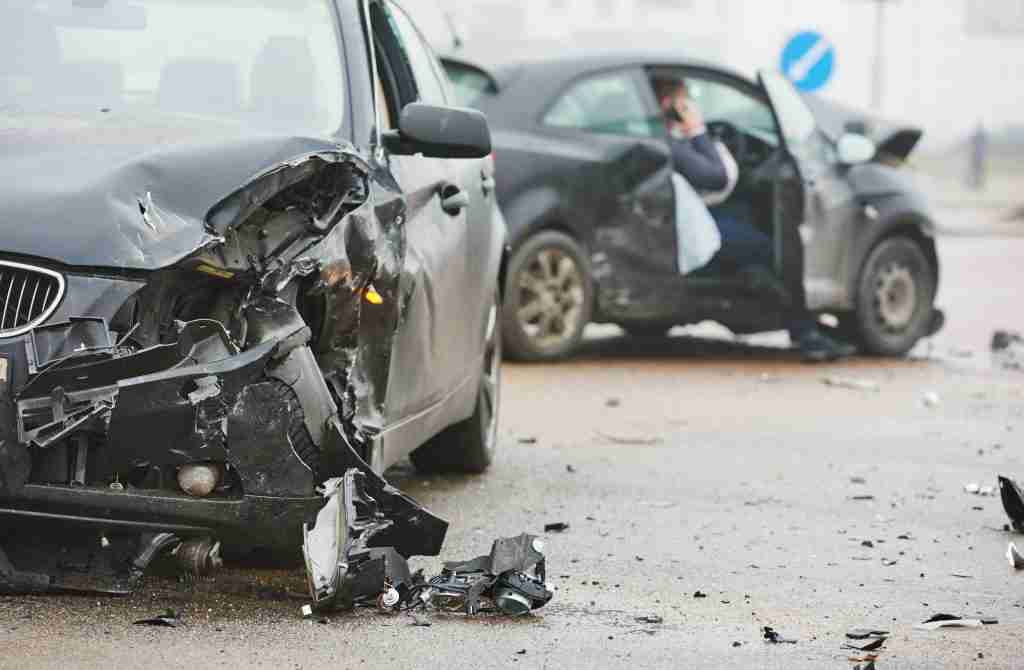
If you find yourself at fault in a car accident in California, it’s imperative to understand the legal obligations and potential consequences that follow. That is why following the right steps in the aftermath of a car accident is critical.
Fleeing the scene of an accident, particularly if you’re responsible, can result in significant legal consequences. California law mandates that you must stay at the accident site. Leaving prematurely can result in hit and run charges, carrying severe penalties. Even in cases of property damage alone, it’s crucial to exchange insurance information with the other driver involved in the accident. If you hit a parked car, you can leave after leaving your contact details for the owner.
Handling Accidents with Injuries:
Accidents involving injuries demand a more serious approach. Law enforcement officers may need to be involved, and it’s crucial to cooperate. However, caution is advised regarding statements made about the accident. Seeking legal advice promptly can guide you on how to discuss the collision without inadvertently harming your case.
Insurance Involvement:
In minor property damage cases, your insurance company may manage the resolution process. While your rates are likely to increase if you’re deemed at fault, insurance representatives might attempt to demonstrate shared responsibility, thereby limiting the impact on your premiums.
Legal Assistance:
Don’t accept blame without considering all factors. California follows a comparative negligence system, allowing fault to be shared among multiple parties. Consulting a Car Accident Lawyer, especially if there are potential shared responsibilities, can help assess your case thoroughly. Factors such as the other driver’s erratic behavior, violation of traffic signals, tailgating, or distracted driving could influence the distribution of blame.
Potential Lawsuits:
In some instances, car accident cases escalate to court, especially if serious injuries are involved. If another party decides to sue you, they might seek compensation for medical treatment, lost wages, vehicle repairs, pain and suffering, among other damages. Seeking legal representation promptly can protect your rights and interests throughout the legal process.
Criminal Charges:
You could potentially face criminal charges in addition to financial responsibilities depending on the circumstances surrounding the accident. DUI or reckless driving could result in significant jail time, particularly if the accident results in severe injuries or fatalities.
Statute of Limitations:
If you’re worried about possible legal action, it’s crucial to understand that in California, the statute of limitations for filing a personal injury lawsuit is two years from the accident date. Until this period expires, the other party retains the right to pursue legal action. After this timeframe, you are generally no longer liable for damages related to the accident.
In summary, being at fault in a car accident demands careful navigation of legal processes and potential consequences. Seeking legal advice and understanding your rights can significantly impact the outcome, ensuring you make informed decisions during this challenging time.
Dealing with Insurance Companies
Contact your insurance company as soon as possible to report the accident. Provide them with accurate and honest information about the incident. Your insurance provider will conduct an investigation into the accident and, based on the results, assess the applicable coverage. However, it is recommended to not communicate with insurance companies alone. A car accident lawyer has the expertise to deal with insurance companies.
Traffic Violations and Points
Depending on the circumstances, you might receive traffic citations or points on your driving record, which can impact your driving privileges and insurance rates.
Navigating Fault and Liability: Your Roadmap After a Car Accident in California

Being at fault in a car accident in California can have significant repercussions, but understanding the process and your rights is crucial. It’s essential to remain calm, cooperate with authorities, and seek legal advice if necessary. By following the proper procedures and being aware of your rights, you can navigate the situation more effectively and protect yourself from undue financial and legal consequences.
Facing the complexities of a car accident in California? Our experienced Car Accident Lawyers at JSM Injury Firm are here to help you navigate the legal maze. Don’t face it alone—get expert guidance and support. Contact us now for a consultation and let us fight for your rights.
The post What Happens if You are At Fault in a Car Accident in California? appeared first on JSM Injury Firm APC.
Understanding Elder Abuse: Identifying Signs and Taking Action 28 Nov 2023, 4:00 am
Elder abuse is alarmingly prevalent, with one in 10 older adults experiencing various forms of mistreatment, including financial fraud and emotional neglect. According to World Health Organization estimates, approximately 320 million seniors are projected to suffer from elder abuse by 2050, highlighting the urgent need for awareness and action to ensure the safety and dignity of our elderly population. In this article, we will delve into the various aspects of elder abuse, shedding light on its different forms and offering essential insights into the reporting process.
1. Types of Elder Abuse
- Physical Abuse: This involves the use of force that causes injury, pain, or impairment to an older adult. Signs may include unexplained bruises, cuts, or fractures.
- Emotional Abuse: Emotional abuse includes verbal threats, humiliation, or isolation, causing emotional pain or distress. Behavioral changes, withdrawal, or fearfulness might indicate emotional abuse.
- Financial Abuse: Financial exploitation involves unauthorized use of an elder’s funds or assets. Suspicious financial transactions, sudden changes in bank accounts, or missing valuables are red flags.
- Neglect: Neglect occurs when a caregiver, whether serving in the elder’s home or in a nursing home, fails to meet an elder’s basic needs, such as food, shelter, medical care, or personal hygiene. Poor hygiene, malnutrition, or untreated medical conditions can be signs of neglect.
2. Who are the Perpetrators?
Neglect by family members, especially emotional neglect, stands out as the predominant form of elder abuse, accounting for almost 27 percent of reported cases. Aside from family members, caregivers, or even strangers are also leading perpetrators of elderly abuse. It often happens in situations where the older adult is dependent on others for their daily care and support.
3. How to Recognize the Signs of Elder Abuse?

Recognizing the signs of elder abuse requires keen observation and understanding of the subtle changes that may indicate mistreatment. Here’s a detailed elaboration on the signs of elder abuse:
- Unexplained Injuries or Bruises: One of the most apparent signs of physical abuse is unexplained injuries or bruises on the elderly person’s body. These injuries might be in the form of cuts, welts, or fractures. Be particularly concerned if these injuries appear frequently, and the explanations provided don’t seem plausible. Pay attention to injuries that seem inconsistent with the elder’s usual activities.
- Emotional Withdrawal or Depression: Emotional abuse can cause significant psychological distress in older adults. Victims of emotional abuse may exhibit signs of depression, anxiety, or emotional withdrawal. They might become unusually quiet, avoid eye contact, or display sudden mood swings. If an elderly person becomes noticeably more reserved or seems consistently sad, it could be indicative of emotional abuse.
- Sudden Changes in Financial Situations: Financial exploitation is a prevalent form of elder abuse. Watch out for unexpected or unexplained financial transactions, such as large withdrawals, transfers, or changes in the elder’s will or beneficiaries. Be cautious if there are sudden alterations in their financial situation, especially if they involve significant amounts of money, and the elder is unable to explain or comprehend these changes.
- Poor Hygiene and Inadequate Living Conditions: Neglect often manifests in poor hygiene and inadequate living conditions. If an elder appears consistently unkempt, wears soiled clothing, or lives in an environment that is dirty, cluttered, or lacking basic necessities, it could be a sign of neglect. Additionally, unexplained weight loss, dehydration, or untreated health conditions can also be indicative of neglectful behavior.
- Fear of Specific Individuals or Caregivers: Pay attention to the elder’s behavior around specific individuals, especially caregivers or family members. If the elder displays fear, anxiety, or discomfort in the presence of certain people, it could be a red flag. Victims of abuse often hesitate to openly discuss their experiences, fearing potential retaliation from their abusers. They might hesitate to discuss their concerns openly, making it crucial to observe their non-verbal cues and reactions to specific individuals.
4. How to Report Elder Abuse?

If you suspect elder abuse, it’s crucial to take action immediately. Here’s how you can report it:
- Contact Adult Protective Services (APS):
What APS Does:
Adult Protective Services (APS) agencies are social service organizations specifically designed to help vulnerable adults who are at risk of abuse, neglect, or exploitation. These agencies have professionals trained to assess situations involving elder abuse and provide appropriate interventions.
How APS Can Help:
When you contact APS, they will conduct a thorough investigation into the reported abuse. Trained social workers will assess the elder’s safety, well-being, and living conditions. If abuse is confirmed, APS can intervene by offering services such as counseling, medical assistance, or finding alternative living arrangements if necessary. APS works closely with law enforcement and other agencies to ensure the elderly’s safety.
- Call the Police:
Immediate Response to Danger:
If you believe the elder is in immediate danger or facing a crisis, do not hesitate to call the local police. Law enforcement officers are trained to handle emergency situations and can provide immediate assistance and protection. They have the authority to remove the elder from a dangerous environment and can initiate legal actions against the perpetrators of abuse.
- Consult an Attorney:
Protecting the Elder’s Legal Rights:
If you suspect financial exploitation or any form of elder abuse, consulting an experienced attorney is essential. In Anaheim, a personal injury attorney from JSM Injury Firm is experienced in cases related to elder abuse. By seeking assistance from an experienced attorney, such as a seasoned attorney from JSM Injury Firm, you can ensure that the elder’s legal rights are protected and that appropriate legal action is taken against the perpetrators of abuse.
Expertise in Elder Law:
JSM Injury Firm’s personal injury attorney in Anaheim is well-versed in elder law and understands the complexities of cases involving elderly victims. They can provide expert guidance tailored to the specific situation, helping you navigate the legal processes involved in protecting the elder’s assets. Whether it involves financial exploitation, neglect, or any other form of elder abuse, their attorney can offer comprehensive legal support.
Creating Protective Legal Documents:
In cases of financial exploitation, JSM Injury Firm’s attorney can assist in creating essential legal documents such as power of attorney, trusts, or guardianship. These documents play a crucial role in safeguarding the elder’s financial affairs and ensuring responsible management of their assets. With the attorney’s expertise, you can take proactive measures to prevent further exploitation and secure the elder’s financial well-being.
Legal Advocacy and Representation:
JSM Injury Firm’s personal injury attorney will serve as a dedicated advocate for the elderly victim. They will take legal action against the perpetrators of abuse, seeking compensation and justice for the harm caused. Through diligent representation, the attorney will fight to hold the responsible parties accountable, providing the elder with the legal support they need during this challenging time.
5. Raise Awareness:
Community Initiatives and Education Programs:
Raising awareness about elder abuse is vital in preventing future incidents and ensuring a safe environment for older adults. Encourage community initiatives and educational programs focused on elder abuse prevention. Work with local organizations, senior centers, and schools to organize workshops, seminars, and awareness campaigns. Raise awareness among community members, caregivers, and professionals about recognizing elder abuse signs and emphasize the crucial role of reporting any suspicious activities promptly. By increasing awareness, society becomes more vigilant, making it difficult for abusers to operate unnoticed.
Empowering Seniors: A Collective Commitment to Safety, Dignity, and Legal Protection

Protecting our older adults from abuse is a collective responsibility. By understanding the different forms of elder abuse and staying vigilant, we can create a safer environment for our seniors. If you suspect elder abuse, do not hesitate to report it. Collectively, we can guarantee that our senior citizens lead lives marked by dignity, respect, and freedom from the fear of mistreatment.
Concerned about elder abuse or seeking legal guidance on protecting your loved one? Contact JSM Injury Firm’s experienced personal injury attorney in Anaheim today. Our personal injury attorney is dedicated to ensuring the safety and well-being of our senior citizens. Let us stand by your side, providing expert legal support and compassionate care. Call us now at (949) 404-4826 to take the first step in safeguarding their rights and dignity.
The post Understanding Elder Abuse: Identifying Signs and Taking Action appeared first on JSM Injury Firm APC.
Types of Negligence & How Do They Apply in Different Scenarios in California? 24 Nov 2023, 12:08 am
Negligence is a fundamental legal concept that plays a crucial role in personal injury cases. In the state of California, understanding the various types of negligence and how they apply in different situations is essential for both legal professionals and the general public. This article explores the different types of negligence and their applications in various scenarios within the jurisdiction of California.
In personal injury law, states follow different doctrines concerning negligence and liability. In California, the concept of comparative negligence holds significant sway. According to California Civil Code section 1714, the degree of fault directly influences the liability of the at-fault party, ensuring a proportional distribution of responsibility.
In practical terms, if an injured party shares some responsibility for an accident due to their own negligence, their compensation award is adjusted accordingly in California. Even if a plaintiff is 90% at fault, they can still recover 10% of the compensation award. For instance, if a plaintiff is found to be 25% at fault in a car accident, they would receive $75,000 out of a $100,000 award ($100,000 minus $25,000, or 25%).
What are the Types of Negligence?

Negligence laws in the U.S. differ by state. Contributory negligence bars recovery in some states, but most, like California, use comparative fault laws for fairness. Gross negligence leads to punitive damages, while vicarious negligence holds parties responsible for others’ actions. Negligence per se simplifies cases by deeming defendants negligent based on the act itself.
Contributory Negligence: A Harsh Approach Elsewhere
In certain states following contributory negligence laws, any degree of negligence on the part of the plaintiff can completely bar them from financial recovery. Even if the defendant is predominantly responsible for the accident, the plaintiff may not receive any damages if contributory negligence is proven.
Fortunately, most states, including California, have transitioned to comparative fault laws, which provide a more equitable approach. However, some states combine elements of both doctrines, setting a maximum percentage of fault (often 49% to 51%) before the plaintiff loses the right to recovery.
Gross Negligence: A Severe Breach of Trust
Gross negligence represents a severe form of negligence, signifying reckless behavior, a wanton disregard for others’ safety, or even an intent to cause harm. Instances such as drunk driving, falling asleep behind the wheel, or performing surgery on the wrong patient fall under this category. In cases involving gross negligence resulting in serious injuries, judges may award punitive damages, punishing the defendant for their particularly egregious actions.
Vicarious Negligence: Accountability Beyond Individuals
Vicarious negligence, or vicarious liability, refers to one party’s accountability for the actions of another. This type of negligence often arises in accidents involving employees. For example, if a bus driver causes an accident while texting and driving, the bus company could be held vicariously liable for the driver’s negligence. Similarly, vicarious negligence can apply to parents with minor children or pet owners with their pets. Understanding vicarious liability is crucial for victims when determining the correct defendant to name in their claim.
Negligence Per Se: Simplifying the Legal Battle
Negligence per se, a doctrine that deems a defendant negligent without further proof, simplifies the legal process. This concept asserts that the act itself is inherently negligent, eliminating the need for additional evidence of wrongdoing.
While California courts rarely allow plaintiffs to employ the negligence per se argument, it may be applicable in cases involving violations of the law. If someone’s violation of a law, such as drunk driving, directly causes another person’s injuries, the broken law itself can serve as sufficient proof of negligence. Negligence per se streamlines the legal proceedings, making it easier for plaintiffs to establish liability in personal injury cases within the state.
How Do Negligence Apply In Different Situations?
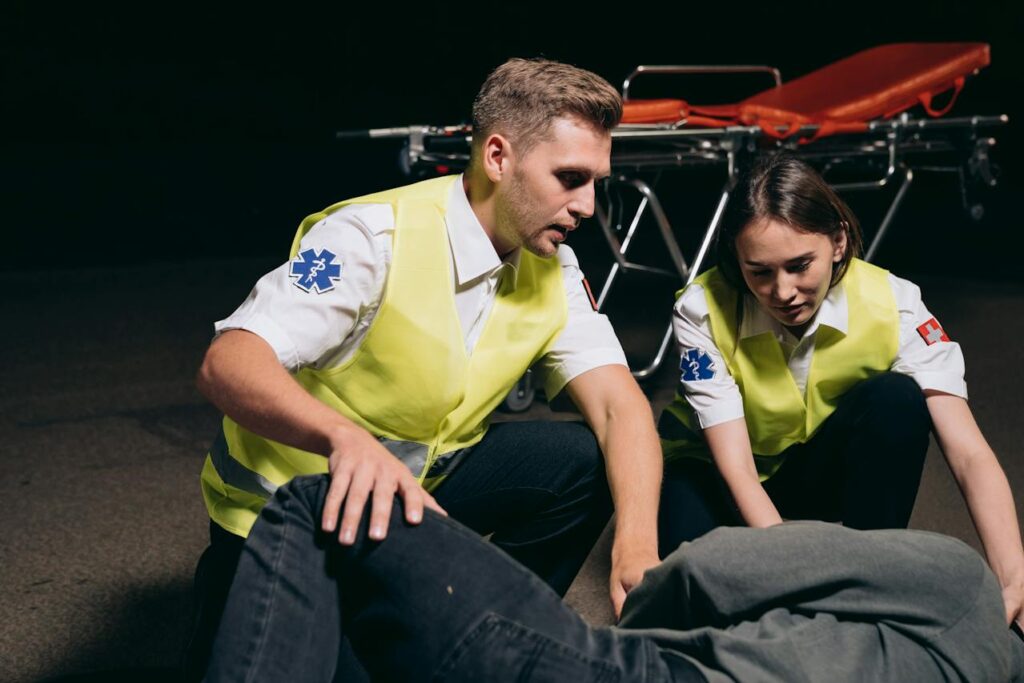
I. General Negligence: Exercising Due Care
General negligence involves neglecting to exercise reasonable care, leading to harm or injury to another person. In California, establishing a claim of general negligence involves proving four key elements: duty, breach of duty, causation, and damages. Duty signifies the legal obligation to exercise reasonable care, breach of duty occurs when this obligation is not met, causation establishes the link between the plaintiff’s injuries and the defendant’s breach of duty directly, and damages quantify the actual harm suffered by the plaintiff.
II. Comparative Negligence: Fair Compensation Despite Fault
California operates under a comparative negligence system, allowing plaintiffs to seek damages even if they bear partial responsibility for the accident. However, the awarded damages are adjusted proportionally based on the plaintiff’s percentage of fault. For instance, if a plaintiff is deemed 20% at fault for an accident with total damages amounting to $100,000, the plaintiff would receive $80,000 after a 20% reduction.
III. Professional Negligence: Upholding Standards of Care
Professional negligence, commonly known as malpractice, arises when a professional fails to meet the expected standard of care in their field, leading to harm for a client or patient. This form of negligence is applicable to professionals such as doctors, lawyers, accountants, and engineers. In California, proving professional negligence entails demonstrating the specific standard of care within the respective profession and establishing that the defendant’s actions deviated from this standard, causing harm.
IV. Premises Liability: Ensuring Safe Spaces

Premises liability pertains to the legal duty of property owners or occupants to ensure safe conditions on their premises. Property owners are required to warn visitors about potential hazards and take reasonable precautions to prevent accidents. In California, should someone get injured due to a hazardous condition on another person’s property, the property owner might be held responsible for the resulting harm.
V. Product Liability: Holding Manufacturers Accountable
Product liability cases deal with injuries caused by faulty products, making manufacturers, distributors, and sellers accountable when a defect harms consumers. In California, product liability claims can be based on defects in design, manufacturing, or insufficient warnings or instructions. To succeed in a product liability case, plaintiffs must demonstrate that the defect directly caused their injuries.
What are the Elements to Prove Negligence?
In proving negligence in personal injury cases, four fundamental elements form the core foundation of the legal argument. These elements, outlined below, provide a structured framework for establishing liability and seeking compensation for victims:
- Duty of Care:
- Every person must act with caution and prudence, as a reasonable person would in the same circumstances.
- Examples include obeying traffic rules and ensuring properties are safe and compliant with codes.
- Breach of Duty of Care:
- Occurs when the responsibility of duty of care is neglected.
- Examples include failure to yield or neglecting necessary repairs.
- Causation:
- Establishes a direct or proximate link between the breach of duty and the resulting harm.
- Direct causation occurs when the defendant’s actions directly cause the injury.
- Proximate cause implies the defendant’s actions were the primary cause, even indirectly.
- Victim and Damages:
- A victim must suffer injury or loss due to the breach of duty, establishing grounds for compensation.
Were You or a Loved One Has Been a Victim of Someone Else’s Negligence? Trust JSM Injury Firm to Handle Your Case
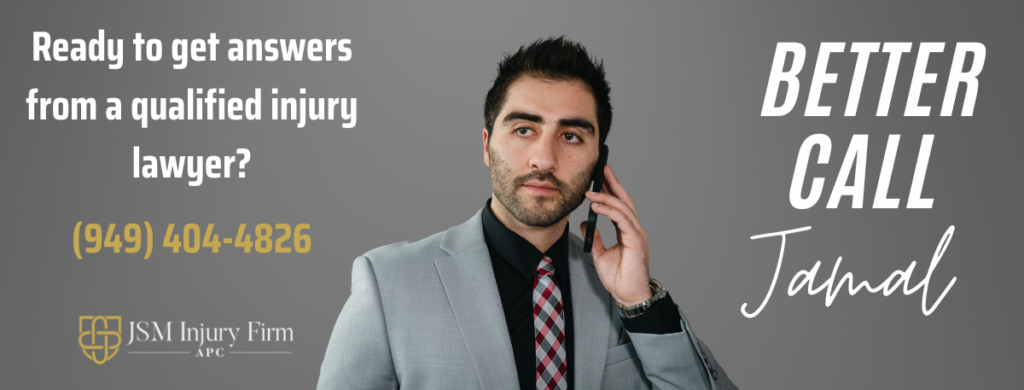
Understanding the different types of negligence and their applications in various scenarios is essential for navigating personal injury cases in California. Whether it’s general negligence, comparative negligence, professional negligence, premises liability, or product liability, each type of negligence has specific elements that must be proven to establish a successful claim. JSM Injury Firm APC’s personal injury lawyer is well-versed in these concepts, ensuring that their clients receive the representation they deserve in personal injury cases. By comprehending these legal principles, individuals can protect their rights and seek appropriate compensation when they have been injured because someone else has been negligent. If you’ve been a victim of negligence and are seeking justice, JSM Injury Firm is here to help. Contact us today at (949) 404-4826 to discuss your case and explore your legal options. Your rightful compensation and peace of mind are just a call away.
The post Types of Negligence & How Do They Apply in Different Scenarios in California? appeared first on JSM Injury Firm APC.
Can You Still Pursue a Car Accident Claim Even if You are Partially at Fault in California? 7 Nov 2023, 4:00 am
Insights from a Car Accident Lawyer
Experiencing a car accident can be incredibly frightening. Taking comfort in the understanding that the accident wasn’t your fault can offer relief, enabling you to pursue compensation for the incurred damages. But what if determining fault isn’t straightforward? Can you still claim compensation if you share some responsibility for the accident?
The answer is yes, especially in California, which operates under a pure comparative fault system. In this framework, the courts can allocate damages among multiple parties involved in an accident based on each party’s percentage of fault.
Let us delve deeply into California’s comparative fault laws in this article. First, we’ll closely examine the concept of comparative fault. Then, we will delve into the kinds of evidence that are crucial in determining the extent of fault in these situations. Finally, we’ll focus on the crucial factors necessary to establish negligence and fault.
1. California’s Comparative Fault Laws: How Do They Work?
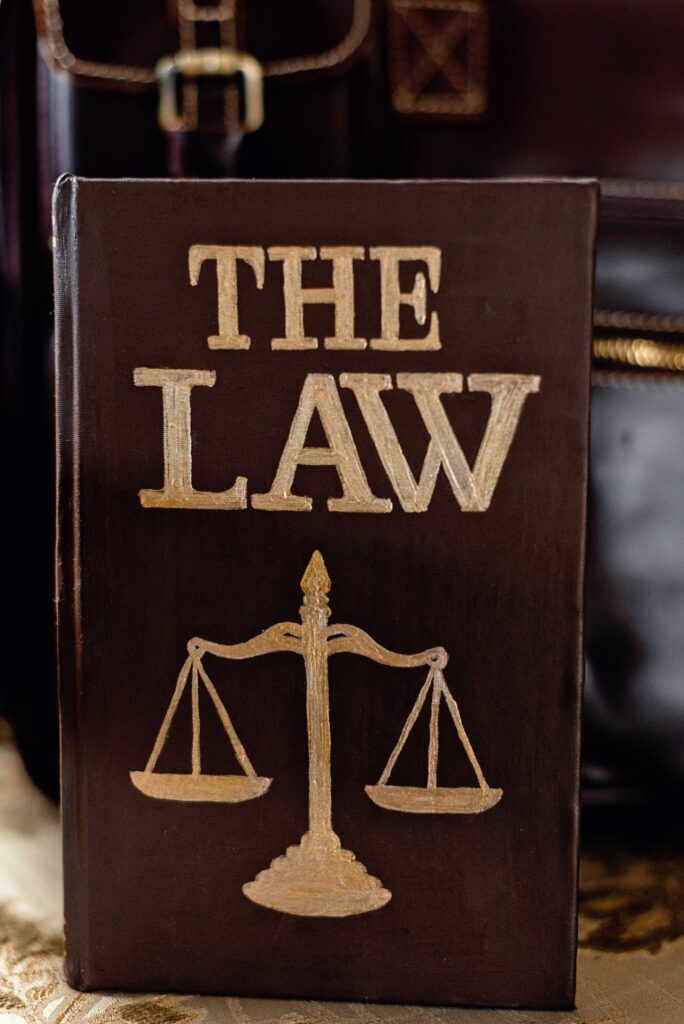
Various states employ different approaches to determine fault in accidents and its impact on the ability to recover damages. In some systems, you can only seek damages if you bear no responsibility for the accident. California, however, follows a system known as comparative fault.
To illustrate how comparative fault functions, consider a scenario where you collide with another vehicle, the only parties involved, for simplicity’s sake:
Let’s meet Sarah and Mark, two drivers entangled in an unexpected accident. Sarah was maneuvering her car into another lane, preparing to make a left turn, when Mark’s speeding vehicle suddenly collided with hers, catching her off guard. Both shaken and injured, they navigated the aftermath of the accident.
As the dust settled, it became clear that the accident was not entirely one-sided. While changing lanes, Sarah admitted she should have exercised more caution given the traffic. On the other hand, Mark was driving significantly above the speed limit, making it difficult for Sarah to anticipate the collision.
Ultimately, the authorities determined that Sarah bore 20% of the fault, whereas Mark was responsible for 80% of the accident. Sarah decided to seek $10,000 in damages for her injuries and vehicle repairs. Following California’s pure comparative fault system, her compensation was calculated by deducting her 20% fault from the total claim. Therefore, Sarah was awarded $8,000, acknowledging her 20% responsibility for the incident.
The intriguing aspect of California’s system was its fairness. It worked both ways. For instance, had Sarah been seeking $10,000 but was found to be 80% at fault, she could still pursue compensation. However, she would only receive 20% of the claimed damages, totaling $2,000, reflecting her 80% responsibility for the accident. This unique approach ensured that regardless of their degree of fault, both parties had the opportunity to seek rightful compensation.
2. How is Fault Determined in a Car Accident

In the story above, the next question is, how did authorities determine that Sarah bore 20% of the fault. Let us dive into details on how fault is established, and what factors determine fault in a comparative negligence case:
A. When establishing fault in a car accident, various factors come into play:
- Police Report: The initial police report crafted by the responding officer is crucial. It outlines their findings and observations, including any traffic violations or negligent behavior, which are pivotal in determining fault.
- Eyewitness Statements: Testimonies from witnesses can offer essential insights. Eyewitnesses can provide detailed accounts of the actions of all parties involved, aiding in establishing fault.
- Accident Reconstruction: Experts might recreate the accident scene using evidence like skid marks or vehicle damage. Through this analysis, they can comprehensively understand how the accident transpired, assisting in fault determination.
- Traffic Laws: Traffic Law violations, such as running a red light or speeding, indicate negligence and fault.
- Expert Testimony: In complex cases, experts can testify about specific aspects of the accident. For instance, medical experts may discuss injury severity, and engineering experts might explain how mechanical failures contributed to the incident.
- Independent Legal Investigation: Post-accident, attorneys conduct their investigations. They review evidence, interview witnesses, and assess damages. The insurance company’s determination of fault can also serve as evidence in legal claims, contributing to the comprehensive evaluation of fault.
B. What Factors Determine the Degree of Fault in a Comparative Negligence Case?
Determining fault in a comparative negligence case hinges on four crucial factors. These elements are indispensable in establishing the foundation for any negligence-based personal injury lawsuit spanning legal history. Indeed, without these elements, a case lacks merit, even if an accident occurred and the other party bears 100% responsibility.
The four pivotal factors in a comparative negligence case include:
- Duty Owed to You: To seek damages, you must be owed a duty of care. Every time someone operates a vehicle, they automatically owe a duty of care to others on the road. Similarly, businesses owe this duty to individuals invited onto their premises. However, damages cannot be recovered if the duty of care was not owed, such as in injuries sustained while trespassing.
- Breach of Duty: Personal injury law centers around one person failing to uphold their duty of care, causing harm to another. To build a solid case, it is crucial to prove that the duty of care was violated. For instance, this could involve proving that the other party was speeding or driving while distracted.
- Breach Resulted in the Accident: It must be evident that the breach of duty directly led to the accident. Using the example of speeding, you must show that the decision to exceed the speed limit directly caused the accident.
- Suffering Damages: There are no grounds for recovering compensation without incurred damages. However, these damages must be intricately linked to the specific accident. Certainly, you are eligible to claim compensation for a back injury if it can be directly connected to the accident, establishing a definite cause-and-effect relationship between the breach of duty and the resulting harm.
The Crucial Step: Contacting JSM Injury Firm’s Car Accident Attorney After an Accident

Getting involved in a car accident, especially when you are partially at fault, can be overwhelming. In such situations, swift action is key to ensuring your rights are protected and a strong case is built in your favor. Contacting JSM Injury Firm‘s Car Accident Attorney promptly after an accident in California is not just advisable—it’s vital.
Even if you share some responsibility for the accident, a skilled attorney can navigate the complexities of California’s legal system. They can assess the situation, gather essential evidence, and strategize a compelling case on your behalf. Having a deep understanding of comparative fault laws, our Car Accident Lawyer can help you in optimizing your opportunities for fair compensation, taking into account the specific percentage of fault assigned to each party involved in the accident.
Acting promptly also helps preserve crucial evidence, secures witness statements, and ensures that your legal rights are safeguarded from the very beginning. JSM Injury Firm’s experienced Car Accident Attorney is well-versed in handling cases where fault is shared, employing their expertise to protect your interests and guide you through the legal and the auto accident claims process.
Don’t wait for uncertainties to escalate. Contacting JSM Injury Firm’s Car Accident Attorney promptly after a car accident, even if you bear partial responsibility, is an essential step towards building a robust case. Our Car Accident Attorney is ready to support you, ensuring your rights are upheld and you receive the compensation you deserve.
Do you have more questions about comparative negligence in a car accident? Contact JSM Injury Firm today at (949) 404-4826 and let us fight for your rights. Your path to justice begins with us.
The post Can You Still Pursue a Car Accident Claim Even if You are Partially at Fault in California? appeared first on JSM Injury Firm APC.
Uninsured and Underinsured Motorist Coverage in California : Why It is Essential 31 Oct 2023, 5:00 am
California, with its endless roads inviting the allure of top-down cruising and the warmth of the sun kissing the water, embodies a quintessential driving experience. Yet, amidst the joy of the open road, a harsh reality persists: Are you genuinely safeguarded against unforeseen accidents? While you might have secured your protection, the same cannot be said for the 16.6% of Californian motorists who, as per the latest data from the Insurance Information Institute (III), remain uninsured – a staggering four percent higher than the national average of 12.6%.
In the unfortunate collision, the question arises: What if the other driver lacks adequate insurance coverage? Surprisingly, California is the tenth state on the list of those with the highest number of uninsured drivers, with Florida leading the pack at number one. Moreover, this concerning statistic is on the rise – the number of uninsured drivers in California escalated by 1.4% from 2015 to 2019. While the state mandates auto insurance, the legal requirement primarily extends to liability coverage, designed to assist the injured party when a driver is at fault for an accident. But what if you are in a collision with an uninsured or underinsured driver? This is where the significance of uninsured and underinsured motorist (UM and UIM) coverage comes into play, providing a vital safety net for Californians. This article delves into the intricate details of this crucial auto insurance coverage, shedding light on why it is indispensable in the Golden State’s diverse driving landscape.
What are Uninsured and Underinsured Insurance Coverage in California?
Uninsured motorist (UM) coverage steps in to cover the costs when you’re involved in an accident caused by a driver without any insurance. On the other hand, underinsured motorist (UIM) coverage protects you if the at-fault driver’s insurance doesn’t suffice to cover your full financial losses or damages.
Why Are These Coverages Essential
These coverages act as financial safeguards, especially in a state like California, where a significant percentage of drivers lack adequate insurance. Despite California law not mandating these coverages, having UM and UIM insurance is pivotal to shield yourself from crippling financial burdens arising from unforeseen accidents.
The Risk of Underestimating the Importance of UM and UIM Coverage:
To cut down on insurance costs, many California drivers often limit their coverage to the bare legal minimum. However, this decision can prove disastrous. If you’re hit by an uninsured or underinsured driver, you could be burdened with substantial medical bills and other expenses, even if the accident wasn’t your fault. Without UM and UIM coverage, you and your family might face a severe financial crisis due to another driver’s negligence.
Investing in UM and UIM coverage is not just a matter of legal compliance; it’s a proactive step toward protecting your financial stability in the face of unforeseen accidents.
Understanding UM/UIM Insurance: What Does it Cover?
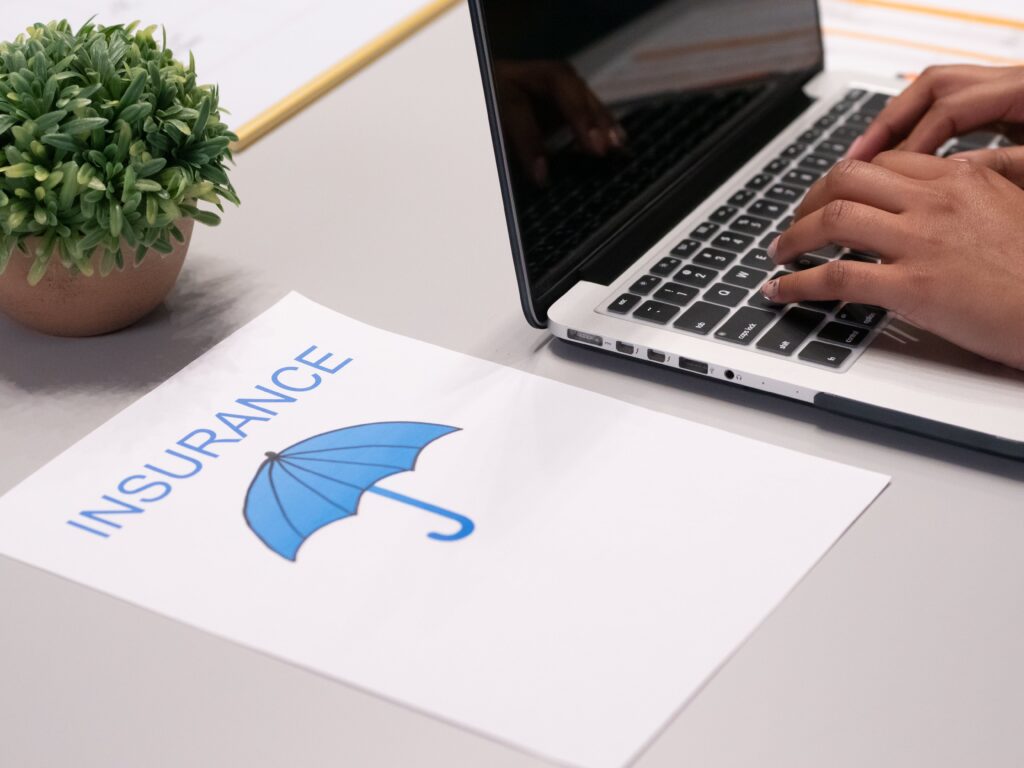
UM/UIM insurance serves as a safety net, ensuring that your losses are compensated after the accident claim process, irrespective of the other driver’s insurance limits. It provides extensive coverage, addressing various aspects of your accident-related expenses. Here’s a breakdown of the specific damages you can recover through uninsured/underinsured motorist coverage:
- Medical Expenses: UM/UIM coverage takes care of your medical bills, ensuring you receive necessary treatments without worrying about the costs.
- Property Damage: This includes not only the repair bills for your vehicle but also covers damage to other properties affected in the accident. Please do note that this is not to be confused with UM for bodily damage, which is offered separately.
- Rental Vehicle Costs: If your car is in the shop for repairs, UM/UIM insurance can cover the expenses of renting a vehicle, ensuring you can go about your daily activities without disruption. Again, this is a provision covered by UM for property damage, and not for UM for bodily damage.
- Lost Income: If the accident leads to your inability to work, UM/UIM insurance compensates for the income you lose during your recovery period.
- Physical and Emotional Pain and Suffering: UM/UIM coverage acknowledges the pain and suffering you endure due to the accident, providing financial support for both physical injuries and emotional distress.
- Lost Quality of Life: Serious accidents can significantly impact your day-to-day life. UM/UIM insurance considers these effects, compensating for the diminished quality of life you experience post-accident.
- Mental and Emotional Distress: Emotional trauma resulting from the accident is also covered. UM/UIM insurance recognizes the psychological toll accidents can take and provides support for mental distress.
In essence, UM/UIM insurance is comprehensive, ensuring that you are not left with financial burdens in the aftermath of a severe car accident. It covers not only tangible expenses like medical bills and car repairs but also intangible losses such as emotional distress, allowing you to focus on recovery without worrying about the financial implications.
How Much Uninsured and Underinsured Motorist Coverage Will You Need?
In California, insurance companies typically offer uninsured/underinsured policy limits that match your liability policy limits. For instance, if you’ve chosen 50/100 limits for accidents you cause, you can usually purchase the same 50/100 policy limits for accidents caused by uninsured or underinsured drivers.
However, it’s crucial to note a significant difference in California’s policy compared to other states like Nevada. In California, you cannot receive compensation beyond the amount specified in your policy limits for injuries caused by an uninsured or underinsured motorist. In contrast, states such as Nevada provide coverage under uninsured motorist claim policies encompassing all damages from accidents caused by uninsured or underinsured drivers. Therefore, understanding your policy’s limitations is vital to managing expectations and making informed decisions about your insurance coverage.
Expanding Your Protection: Understanding California Umbrella Policies
In the context of UM/UIM coverage, it’s essential to recognize the value of a California umbrella policy. While UM/UIM insurance provides crucial protection, its coverage has limits. If you seek additional insurance beyond the maximum limits set by UM/UIM coverage in California, opting for an umbrella policy is a prudent choice.
What is an Umbrella Policy?
An umbrella policy serves as a supplemental safety net, offering extra coverage beyond standard insurance policies’ boundaries. Remarkably, these policies are cost-effective and versatile. They can extend coverage for excess losses under any existing insurance policy, ensuring that you have comprehensive protection across various aspects of your life.
Why Consider an Umbrella Policy?
To make an informed decision, consult your insurance broker. Generally, opting out of uninsured motorist coverage is not advisable unless you possess exceptionally robust health insurance or have an incredibly comprehensive disability insurance policy. The umbrella policy acts as an additional layer of security, providing a financial cushion in scenarios where UM/UIM coverage might fall short.
Navigating Insurance Complexities with JSM Injury Firm

Understanding the intricacies of UM/UIM coverage and umbrella policies can be overwhelming. Still, you don’t have to face it alone. At JSM Injury Firm, we comprehend California’s insurance protection nuances. Suppose you find yourself in the unfortunate situation of an accident involving an uninsured or underinsured driver. In that case, our Car Accident Lawyer is here to assist you.
We guide you through the legal complexities and provide expert advice on the importance of UM/UIM coverage and why investing in an umbrella policy is essential. Your well-being is our priority, and we are dedicated to ensuring you have the comprehensive protection necessary to face any unforeseen circumstances confidently.
With JSM Injury Firm by your side, you can easily navigate insurance challenges, secure in the knowledge that you have a knowledgeable and supportive attorney advocating for your rights and protecting your interests. Contact us today for a consultation, and let us help you safeguard your future.
The post Uninsured and Underinsured Motorist Coverage in California : Why It is Essential appeared first on JSM Injury Firm APC.
Car Insurance Claims Do’s and Don’ts in California 23 Oct 2023, 6:00 am
Car accidents can be traumatic experiences, often leaving individuals physically injured, emotionally shaken, and financially burdened. Navigating the aftermath of a car accident involves dealing with insurance companies, legal procedures, and medical treatments.
Recognizing your rights is imperative if you or a loved one has recently been involved in a motor vehicle accident. Motor vehicle accidents are distinct from other types of incidents, which also presents challenges when seeking compensation. This article delves into essential do’s and don’ts of the claims process for car accidents, offering valuable and helpful insights to help you navigate this complex terrain successfully. Understanding the dos and don’ts in the car accident claims process is essential to ensure you receive fair compensation and protect your rights.
Do’s in a Car Accident Claims Process
Ensure Safety First:
Prioritize safety for yourself, passengers, and others involved. If feasible, relocate your vehicle to a secure area and activate hazard lights to warn other drivers.
Contact Authorities:
Call the police to report the accident, even for minor incidents. Cooperate with law enforcement officers, providing accurate information to establish an official record of the incident.
Seek Medical Attention:
Even if injuries seem minor, seek medical evaluation promptly. Getting immediate medical help is essential for your health. It helps establish a clear connection between the accident and your injuries.
Document the Scene:
Take photos of the accident scene, vehicle damages, and injuries. Collect contact information from witnesses and the other party involved. These details serve as crucial evidence during the claims process.
Preserve Evidence:
Keep all documents related to the accident, medical treatment, and repair estimates. Save communication records with the insurance company and other parties involved. Organized documentation strengthens your case.
Seek Legal Advice Promptly:
The claims process can be intricate, with parties involved having conflicting interests, except your lawyer, who solely advocates for you. Insurance companies and their legal representatives prioritize cost-cutting and winning cases, not your well-being. Consulting a personal injury lawyer promptly is crucial. They will inform you about your rights, protect them diligently, and ensure you receive fair compensation, aligning with their ethical duties. Early legal advice empowers you with the knowledge and support needed to navigate the complexities of your case effectively.
Be Honest and Transparent:
When dealing with your insurance company, honesty is paramount. Providing accurate and truthful information about the accident and your injuries is crucial. Transparency ensures a smooth claims process and prevents complications from dishonesty.
As mentioned in the previous item, hiring a skilled personal injury lawyer is essential to safeguard your rights. They act as your advocate, ensuring that pertinent information is communicated effectively to insurance companies and defense counsel. Your lawyer will emphasize the importance of informing them about your progress, fostering transparency, and eliminating surprises during the legal proceedings.
Be Cautious of Surveillance:
Insurance companies may employ surveillance firms to observe your activities. Inconsistencies between your actions and statements made to the insurer can jeopardize your case. It’s crucial to be mindful of your actions, ensuring they align with the information you’ve provided to the insurance company and your legal representation.
Keep Detailed Records and Receipts:
Documenting all your expenses is vital, as they may be compensable either through your Accident Benefits provider or from the defense. Retain receipts for expenses such as taxi fares, ambulance services, and parking fees. Any economic losses incurred due to the accident should be meticulously recorded for proper reimbursement.
Don’ts in a Car Accident Claims Process
Don’t Admit Fault:
Refrain from admitting fault or apologizing at the accident scene. Admissions can be misconstrued as an admission of guilt, potentially impacting your claim negatively.
Don’t Settle Quickly:
Avoid reaching a settlement with the insurance company until you fully comprehend the scope of your injuries and damages. Consult with a lawyer before accepting settlement offers to ensure they are fair and adequate.
Don’t Sign Without Understanding:
Refrain from signing any documents or waivers without understanding their implications. Seek legal advice before signing a release of liability to protect your rights.
Don’t Delay in Seeking Medical Care:
Avoid delaying medical treatment, regardless of the apparent severity of injuries. Prompt medical attention strengthens your claim by establishing the connection between the accident and your injuries.
Don’t Exaggerate or Withhold Information:
Be truthful and accurate when providing information about the accident, injuries, and medical history. Exaggerating or withholding information can damage your credibility and harm your claim.
Don’t Communicate Directly with the Other Party’s Insurance:
Refrain from discussing the accident directly with the at-fault party’s insurance company. Let your attorney handle all communications with the other party’s insurer to prevent misunderstandings or missteps.
Don’t Rely Solely on Police Reports:
While police reports are valuable, they may not contain all the necessary details. Gather evidence, including witness statements and photographs, to strengthen your case and provide a comprehensive perspective of the accident.
Don’t Accept Unfair Settlements:
Avoid accepting settlements that do not cover all your medical expenses, property damage, lost wages, and emotional distress. Consult with legal counsel to assess the fairness of any settlement offers and ensure your rights are protected.
JSM Injury Firm: Your Trusted Legal Partner

Facing the aftermath of a car accident can be overwhelming, but having the proper legal support can make all the difference. JSM Injury Firm stands out as a beacon of expertise and reliability, offering the legal counsel you need after a car accident. Here’s why they are the ideal partner to guide you through the complex car insurance claims process:
Expertise and Experience:
JSM Injury Firm is experienced in personal injury cases, particularly car accidents. Their experienced lawyer possesses in-depth knowledge of relevant laws, regulations, and precedents. This expertise equips them with the ability to navigate the intricate legal landscape surrounding car accident claims.
Comprehensive Understanding of Insurance Policies:
Car insurance policies can be intricate, with various clauses, terms, and conditions. JSM Injury Firm boasts a car accident lawyer well-versed in deciphering these complexities. They can carefully review your insurance policy, guaranteeing that you receive the highest benefits you are entitled to. Their understanding of insurance intricacies proves invaluable in negotiating with insurance companies on your behalf.
Personalized Legal Approach:
Every car accident case is unique, with its circumstances and challenges. JSM Injury Firm’s car accident lawyer recognizes the importance of a personalized approach. They take the time to understand the specifics of your case, tailoring their legal strategies accordingly. This personalized attention ensures that you receive legal counsel customized to your situation, maximizing your chances of a favorable outcome.
Thorough Investigation and Evidence Gathering:
Building a strong case demands meticulous investigation and gathering of evidence. JSM Injury Firm excels in this aspect. Their team conducts extensive inquiries, gathering essential evidence including accident reports, witness statements, medical records, and expert opinions if required. This detailed approach strengthens your case substantially, providing solid grounds for negotiation and, if needed, litigation.
Skillful Negotiation and Litigation:
JSM Injury Firm is known for its adept negotiation skills. They engage with insurance companies on your behalf, advocating for fair and just compensation. They are fully prepared to take your case to court if negotiations do not yield satisfactory results.
Compassionate Client-Centric Approach:
Beyond legal expertise, JSM Injury Firm is committed to providing compassionate support to its clients. They understand your emotional and physical challenges after a car accident. Their compassionate approach guarantees you not only receive expert legal guidance but also emotional support throughout the entire claims process. This holistic approach fosters trust and confidence, making your journey to recovery smoother and more manageable..
Navigating Your Path to a Successful Claims Process: The Support You Deserve from JSM Injury Firm
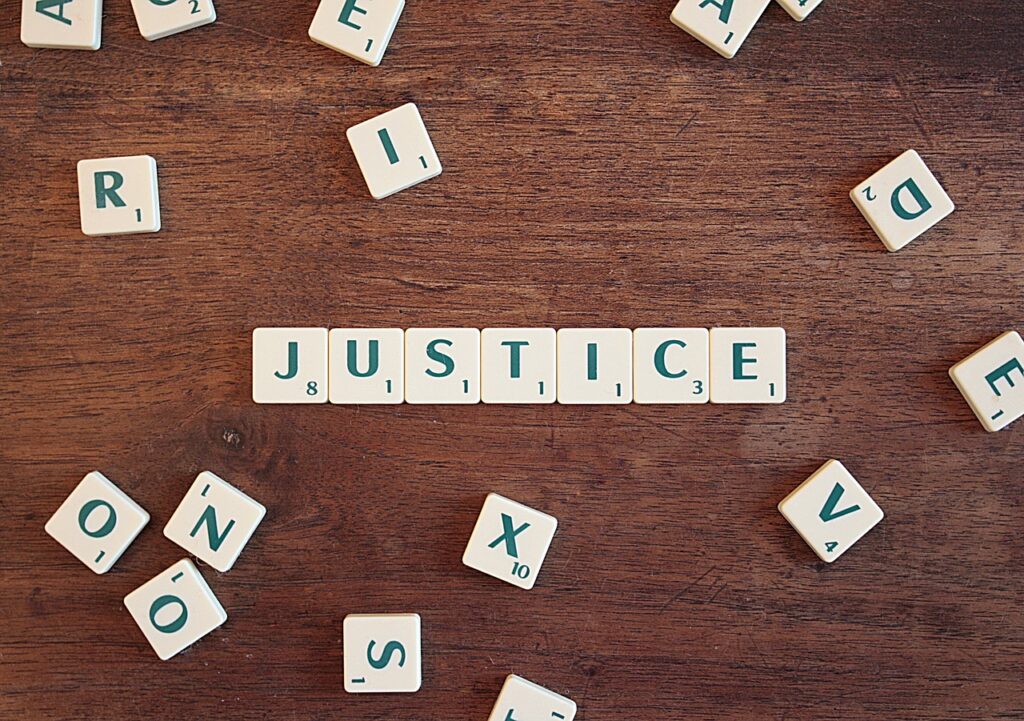
Familiarizing yourself with and following these guidelines can significantly improve your chances of a successful outcome in a car accident claim. By taking proactive steps, seeking legal advice, and staying transparent, you can confidently navigate the intricacies of the claims process and ensure you receive the compensation you are entitled to.
JSM Injury Firm’s combination of expertise, experience, personalized attention, thorough investigation, skillful negotiation, and compassionate approach makes them the ideal choice to guide you through the car insurance claims process. With their dedicated legal assistance, you can concentrate on your recovery, reassured that your case is being handled by skilled professionals. Contact us today, or call us at (949) 404-4826 and let us help you secure the compensation you rightfully deserve.
The post Car Insurance Claims Do’s and Don’ts in California appeared first on JSM Injury Firm APC.
Can You Sue a Nursing Home for Neglect in California? 17 Oct 2023, 7:56 am
According to the data released by the National Center for Victims of Crime (NCVC), over 15,000 nursing home abuse or neglect complaints were filed in 2020 alone. Among these complaints, 29% of which are cases of physical abuse, with 14% being gross neglect. Please take note that an estimated 5 million people are affected by elder abuse each year, making these figures on nursing home abuse cases seem like a tiny fraction, even among reported cases. The greater scope of the problem could be more visible if, at least, most possible cases are reported. To quote from the National Center on Elder Abuse, “Unfortunately, we simply do not know for certain how many people are suffering from elder abuse and neglect.” That is why it is crucial for relatives of the elderly, especially those whose loved ones are in nursing homes, to be enlightened about the crucial concept of neglect and if it applies to what they suspect is happening to their elderly in nursing homes in the State of California.
Placing a loved one in a nursing home is a difficult decision, often made with the expectation of providing them with proper care, support, and dignity in their later years. Unfortunately, cases of neglect in nursing homes are not uncommon. When neglect occurs, it can lead to serious physical, emotional, and psychological harm to residents. In California, like in many other states, legal remedies exist for those who suspect neglect in nursing homes. This article explores whether you can sue a nursing home for neglect in California, outlines what to do if you suspect neglect, and emphasizes the importance of a nursing home abuse lawyer in such cases.
My Edit: According to data released by the National Center for Victims of Crime (NCVC), there were over 15,000 complaints of nursing home abuse or neglect filed in 2020 alone. Of these complaints, 29% involved cases of physical abuse, with an additional 14% categorized as gross neglect. It’s important to note that these figures represent only reported cases, and an estimated 5 million people are affected by elder abuse each year, suggesting that the true scope of the problem could be much larger if more cases were reported.
As the National Center on Elder Abuse acknowledges, the exact number of people suffering from elder abuse and neglect remains uncertain. This uncertainty highlights the importance of educating relatives of the elderly, particularly those with loved ones in nursing homes in California, about the concept of neglect and its potential relevance to their situation.
The decision to place a loved one in a nursing home is often a challenging one, made with the expectation of ensuring proper care, support, and dignity in their later years. Unfortunately, cases of neglect in nursing homes are not uncommon, and when neglect occurs, it can result in severe physical, emotional, and psychological harm to residents. In California, as in many other states, legal remedies are available to those who suspect neglect in nursing homes. This article explores the possibility of pursuing legal action against a nursing home for neglect in California, provides guidance for those who suspect neglect, and underscores the importance of consulting with a nursing home abuse lawyer in such cases.
Is it Possible to Sue a Nursing Home for Neglect in California?

Yes, it is possible to sue a nursing home for neglect in California. The state of California has laws and regulations to protect the rights and well-being of nursing home residents. Neglect, which includes failing to provide adequate care and attention, can be grounds for a lawsuit if it results in harm to the resident.
To pursue a neglect lawsuit in California, you must typically establish the following:
a. Duty of Care: Nursing homes have an obligation and legal duty to provide residents with a reasonable standard of care.
b. Breach of Duty: Neglect occurs when the nursing home fails to meet this standard of care, either through negligence or intentional actions.
c. Causation: You must prove that the neglect directly caused harm to the resident.
d. Damages: You need to demonstrate that neglect caused damages, such as physical injuries, emotional distress, or financial losses.
What to Do If You Suspect Neglect
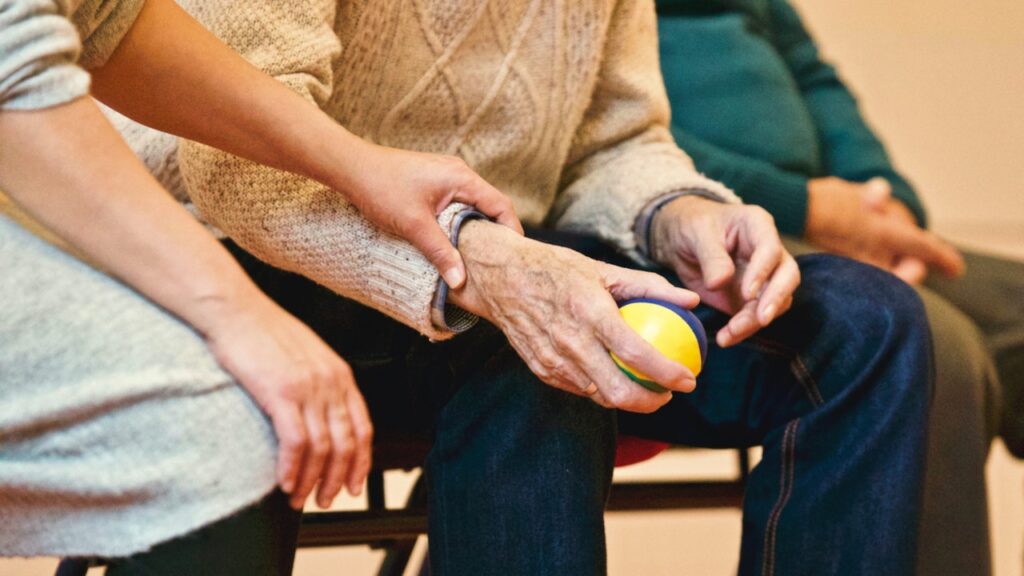
If you suspect neglect in a California nursing home, taking immediate action is crucial to protect your loved one and preserve evidence. Here are steps to consider:
a. Document Everything: Keep detailed records of any signs of neglect, including photographs, medical reports, and conversations with staff or witnesses.
b. Report Suspected Neglect: Report your concerns to the nursing home’s management and the California Department of Public Health (CDPH). The CDPH oversees nursing homes in California and investigates complaints of neglect.
c. Seek Medical Attention: If your loved one suffered physical harm due to neglect, ensure they receive appropriate medical care.
d. Consult an Attorney: Contact an experienced nursing home abuse lawyer to assess your case. They can guide you on the legal process, gather evidence, and advocate for your loved one’s rights.
The Importance of a Nursing Home Abuse Lawyer

Navigating a neglect lawsuit against a nursing home can be challenging, as these facilities often have legal teams to defend them. Here’s why a nursing home abuse lawyer is essential:
a. Expertise in Elder Abuse Laws: An attorney with experience in nursing home abuse cases understands California’s specific laws and regulations related to elder abuse and neglect.
b. Investigation and Evidence Gathering: A lawyer can conduct a thorough investigation, gather evidence, and consult with expert witnesses to strengthen your case.
c. Legal Strategy: Your attorney will develop a legal strategy tailored to your specific situation, increasing your chances of a favorable outcome.
d. Negotiation and Representation: A personal injury lawyer familiar with nursing abuse cases can negotiate on your behalf with the nursing home and their insurance company. If necessary, they will represent you in court.
e. Peace of Mind: Having a skilled attorney by your side can alleviate stress during a challenging time, allowing you to focus on your loved one’s well-being.
How JSM Injury Firm APC Can Support You in Nursing Home Abuse Cases

When you find yourself in the distressing situation of nursing home neglect or abuse in California, you don’t have to face it alone. A firm that can handle nursing home abuse cases can provide the support and guidance you need during this difficult time. One such firm that stands out in elder abuse litigation is JSM Injury Firm APC.
Why Choose JSM Injury Firm APC:
a. Experience: JSM Injury Firm APC has a track record of success representing clients in nursing home abuse cases in Southern California. Their experienced attorney understands the complexities of these cases and are well-versed in state laws and regulations.
b. Compassionate Approach: Dealing with elder abuse or neglect is emotionally challenging. The team at JSM Injury Firm APC takes a compassionate approach to each case, prioritizing the well-being and dignity of the victims.
c. Resources and Expertise: The firm has the resources and expertise necessary to thoroughly investigate neglect cases, gather evidence, and consult with medical experts. This comprehensive approach helps build strong cases for their clients.
d. Legal Advocacy: JSM Injury Firm APC’s attorney is a skilled negotiator and litigator. They are prepared to advocate vigorously on behalf of nursing residents and their loved ones, seeking justice and compensation for the harm and discomfort suffered by nursing home residents.
e. Personalized Attention: Each case is unique, and JSM Injury Firm APC recognizes the importance of providing personalized attention to every client. They take the time to listen to your concerns, answer your questions, and tailor their legal strategies to your specific situation.
Finally, while facing nursing home neglect or abuse is undeniably challenging, knowing that dedicated legal professionals like JSM Injury Firm APC are available to assist you can provide you with the confidence and support needed to pursue justice and protect your loved ones.
Do You Suspect Your Loved One is a Victim of Nursing Home Abuse? Call JSM Injury Firm APC Now
Neglect in a nursing home is a serious issue, especially if we know its actual extent, and can have devastating consequences for the elderly and their families. In California, you have the legal right to sue a nursing home for neglect if it has resulted in harm. However, pursuing such a lawsuit can be complex and emotionally taxing. This is where the expertise of a personal abuse lawyer becomes invaluable, as they can help you navigate the complex legal process, seek justice for your loved one, and hold negligent facilities accountable for their actions. If you suspect neglect in a nursing home in California, swift action and legal representation are essential steps towards ensuring the safety and well-being of your loved one.
If you suspect neglect or abuse in a California nursing home, reaching out to JSM Injury Firm APC can be a crucial step towards seeking justice for your loved one. Call (949) 404-4826. Their committed legal team is poised to assist you in holding negligent facilities accountable for their actions. They will help you ensure the safety and well-being of nursing home residents as soon.
The post Can You Sue a Nursing Home for Neglect in California? appeared first on JSM Injury Firm APC.
What Qualifies as Negligence in a Personal Injury Case in California 9 Oct 2023, 8:00 am
According to the CDC, 826,538 unintentional, non-fatal injuries were reported nationwide between 2019 and 2020. The leading causes of these injuries were falls, “struck-by” incidents, motor vehicle accidents, overexertion, and poisoning, ranked in that order. Given its status as the most populous state in the U.S.A., California carries a significant portion of these cases.
In contrast, fatal accidents revolve primarily around automobile incidents. In the available 2017 data, there were 276,823 reported injuries and 3,898 fatalities resulting from automobile accidents. A notable concentration of these cases occurs in Southern California. Additional factors contributing to unintentional, non-fatal personal injury cases in the state include bicycle accidents, defective products, and dog bites.
If you find yourself injured in California, you might be contemplating whether you have valid grounds for a lawsuit. Examining the 2022 figures related to unlimited civil cases filed in superior courts, it becomes apparent that many cases were initiated, with only a negligible fraction dismissed due to lack of prosecution. This information underscores the presence of valid causes for legal action. In this comprehensive article, we explore the essential components of negligence within personal injury cases in California, exploring pertinent legal principles, the elements of negligence, and critical considerations.
The Legal Basis: Negligence

Negligence is a foundational principle in personal injury law. In California, personal injury cases are primarily based on the theory of negligence. Negligence refers to a person’s failure to exercise reasonable care in their actions or omissions, resulting in harm to another person. To prove negligence in a personal injury case successfully, the plaintiff must establish four essential elements:
a. Duty of Care: The defendant’s obligation to exercise care toward the plaintiff is typically defined based on the specific context of the case, such as a doctor’s responsibility to deliver competent medical treatment or a driver’s obligation to safely operate a vehicle.
b. Breach of Duty: The defendant violated this obligation by not adhering to the expected level of care within the specific scenario. This breach is usually evaluated by comparing the defendant’s conduct to what a reasonable individual would have done in comparable circumstances.
c. Causation: The plaintiff must establish that the harm suffered by the victim was a direct and reasonably foreseeable result of the defendant’s breach of duty. Proximate cause indicates that the defendant’s actions or failures were a distinct and anticipated contributing factor to the injuries sustained by the plaintiff.
d. Damages: Finally, the plaintiff must provide evidence that they incurred tangible losses due to the defendant’s negligence. These losses encompass various forms of harm, such as medical costs, income loss, emotional distress, and other related damages.
Comparative Negligence in California
In California, the principle of comparative negligence is recognized, allowing plaintiffs to seek compensation from the defendant even when they bear some responsibility for their injuries. However, the extent of the plaintiff’s recovery will be proportionally reduced in accordance with their degree of fault. For example, if the plaintiff is determined to be 25% responsible for their injuries, their damages award will be diminished by 25%.
Special Considerations
In California, there are some specific considerations related to negligence in personal injury cases:
a. Pure Comparative Negligence: California employs a pure comparative negligence system, allowing plaintiffs to recover damages even if they are mostly at fault. This system contrasts with other states that employ modified comparative negligence, which bars recovery if the plaintiff’s fault exceeds a certain threshold.
b. Role of Expert Testimony: Expert witnesses often play a crucial role in establishing negligence. In cases involving complex issues, such as medical malpractice or product liability, experts can provide specialized knowledge to help determine whether the defendant breached the standard of care.
c. Statute of Limitations: In California, there is a statute of limitations that limits the time frame within which a personal injury lawsuit can be filed. Generally, plaintiffs have two years from the date of the injury to initiate legal action, though exceptions may apply in certain situations.
How the Concept of Negligence Applies to Specific Examples in Personal Injury Cases in California
1. Automobile Accidents:

As mentioned at the beginning of the article, automobile accidents, whether car accidents, bus accidents, rideshare accidents, and others, are one of the leading causes of personal injury claims in California. Here’s how negligence applies to such cases:
a. Duty of Care: All drivers have an obligation to obey traffic laws and operate their vehicles safely.
b. Breach of Duty: If a driver speeds, runs a red light, or engages in distracted driving, they may breach their duty.
c. Causation: The breach of duty directly causes the accident and resulting injuries.
d. Damages: Injuries sustained in the accident result in damages like medical bills, lost wages, and pain and suffering.
In automobile accident cases, both drivers may be found partially at fault, and damages are apportioned accordingly. For example, if one driver was speeding but the other ran a stop sign, both may share responsibility for the accident.
2. Premises Liability:

Premises liability cases involve injuries that occur on someone’s property due to unsafe conditions. Here’s how negligence applies:
a. Duty of Care: Owners of property are responsible for ensuring the safety of their premises for visitors.
b. Breach of Duty: If a property owner fails to fix hazards like a slippery floor or broken handrail, they may breach their duty.
c. Causation: The hazardous condition directly causes the visitor’s injury.
d. Damages: The visitor suffers injuries leading to damages.
For instance, if a store owner knows about a spill on the floor but doesn’t clean it up promptly, and a customer slips and falls, the store owner may be liable for negligence.
In these examples, while the specific circumstances may vary, the core elements of negligence remain consistent. Plaintiffs are required to demonstrate that the defendant owed a duty of care, violated that duty, directly caused the injuries, and led to the resultant damages.
Having a Personal Injury Lawyer with You is Vital to Establish Negligence

Establishing negligence in personal injury cases can be a complex and challenging process. It requires a comprehensive understanding of California’s laws and legal precedents, as well as the ability to gather and present evidence effectively. A skilled attorney can provide several key advantages when it comes to proving negligence:
- Legal Expertise: Personal injury lawyers are very familiar and well-versed in the intricacies of negligence law in California. They can navigate the legal system, research relevant case law, and use their expertise to build a strong case on your behalf.
- Investigation: Proving negligence often involves gathering evidence, interviewing witnesses, and reconstructing events leading to the injury. A qualified attorney has the resources and experience to conduct a thorough investigation, ensuring that critical evidence is not overlooked.
- Determining Liability: In some cases, there may be multiple parties responsible for your injuries. An experienced attorney can assess liability accurately, identifying all potentially responsible parties, whether they are individuals, businesses, or insurance companies.
- Negotiation Skills: Many personal injury cases are resolved through negotiations with insurance companies. A skilled lawyer knows how to negotiate effectively to secure the maximum compensation you deserve, even in cases of shared fault.
- Litigation Experience: If an equitable settlement cannot be achieved, your attorney is prepared to advocate for you in a courtroom setting. They possess the litigation experience required to skillfully present a persuasive case before a judge and jury, vigorously defending your rights and pursuing your best interests.
When it comes to finding help in California who can provide these critical services, JSM Injury Firm APC stands out as a reliable and reputable choice.
JSM Injury Firm APC: Your Trusted Personal Injury Partner

JSM Injury Firm APC is committed to helping clients establish negligence in personal injury cases in California. Our experienced and dedicated attorney understands the intricacies of negligence law and is passionate about advocating for your rights.
Here’s why JSM Injury Firm APC is the right choice for your personal injury case:
- Expertise: Our attorney has a deep understanding of California’s personal injury laws, allowing us to build robust cases that establish negligence effectively.
- Investigative Skills: We have the resources and know-how to conduct thorough investigations, gathering evidence to support your claim.
- Negotiation Prowess: You can have a diligent personal injury lawyer who is a skilled negotiator who will work to secure the compensation you deserve.
- Litigation Experience: If your case requires litigation, our team is well-prepared to represent your interests in court.
- Client-Centered Approach: At JSM Injury Firm APC, we prioritize our clients’ well-being. Our dedication is unwavering in delivering empathetic and individually-tailored legal counsel, ensuring that we address your requirements throughout the entirety of the legal proceedings.
Conclusion:
Understanding what qualifies as negligence in a personal injury case in California is vital for both plaintiffs seeking compensation for their injuries and defendants defending against such claims. In order to establish negligence, plaintiffs are obligated to prove the four fundamental components: a duty of care, a breach of that duty, causation, and damages. Moreover, California’s comparative negligence system allows for partial recovery even if the plaintiff shares some blame for the accident. Expert testimony and the statute of limitations are also significant considerations in these cases. By comprehending these key aspects, individuals can navigate the legal process more effectively and work toward achieving a just resolution in personal injury cases.
When it comes to personal injury cases and the need to establish negligence, having a qualified attorney by your side is crucial. JSM Injury Firm APC has the experience, dedication, and legal prowess to be your trusted partner. Contact us today at (949) 404-4826 to discuss your case and ensure your rights are protected.
The post What Qualifies as Negligence in a Personal Injury Case in California appeared first on JSM Injury Firm APC.
Signs That Your Slip and Fall Accident Qualifies for Legal Action in California 28 Sep 2023, 1:31 pm
According to the data from NSC (National Safety Council), in 2020, 42,114 individuals lost their lives due to falls, both at home and in the workplace. Within workplace settings, a sobering count of 805 fatalities and 211,640 instances of time-loss injuries was recorded. Alarmingly, among these, 136 workers met their demise due to falls on the same level. Notably, slip and fall accidents are not confined to specific work environments; they can occur anywhere, even in occupations that seemingly involve minimal physical risk, such as desk jobs. Unfortunately, residences are not immune to these accidents, as evidenced by over 6.8 million people seeking emergency room treatment for fall-related injuries.
Considering California’s status as the most populous state in the United States, it significantly contributes to the prevalence of slip-and-fall cases. Consequently, slip and fall accidents are one of the most frequently encountered categories in the realm of personal injury cases in California.
If your slip and fall accident case is among these, could yours qualify for legal action? This article will help Californians determine if their slip and fall case qualifies for legal action, and what courses they should take if they are involved in one. Accidents happen, but when they occur due to negligence or unsafe conditions on someone else’s property, you may have grounds for legal action.
Negligence of the Property Owner or Occupier

One of the key factors in determining whether you have a valid slip and fall case is negligence on the part of the property owner or occupier. To establish negligence, you must prove they failed to maintain a safe environment. Signs of negligence can include:
- Wet or Slippery Floors: If you slip and fall on a wet or slippery surface, it could result from inadequate maintenance or a lack of warning signs.
- Cracked or Uneven Surfaces: Uneven flooring, damaged sidewalks, or potholes can be signs of negligence if not adequately addressed.
- Inadequate Lighting: Poorly lit areas can make it difficult for visitors to see hazards, increasing the risk of accidents.
Failure to Provide Adequate Warning

Property owners have a responsibility and obligation to provide ample warning to visitors about potential hazards. If there were no warning signs or barriers to alert you to the danger, it may indicate negligence. Common examples include:
- Missing “Wet Floor” Signs: A spill or recently cleaned area without a warning sign could be a sign of negligence.
- Lack of Barricades: Construction zones or areas under maintenance should be cordoned off to prevent accidents.
Evidence of Unsafe Conditions

Documenting the conditions at the accident scene is crucial in slip and fall cases. Signs that can help support your claim include:
- Photographs: Take pictures of the scene, including the hazard that caused your fall, as well as any visible injuries.
- Witness Statements: Witnesses’ accounts from those who saw the accident or can testify to the conditions can be valuable.
- Incident Reports: Ensure the incident is reported to the property owner, manager, or security personnel, and request a copy of the incident report.
Medical Records and Treatment
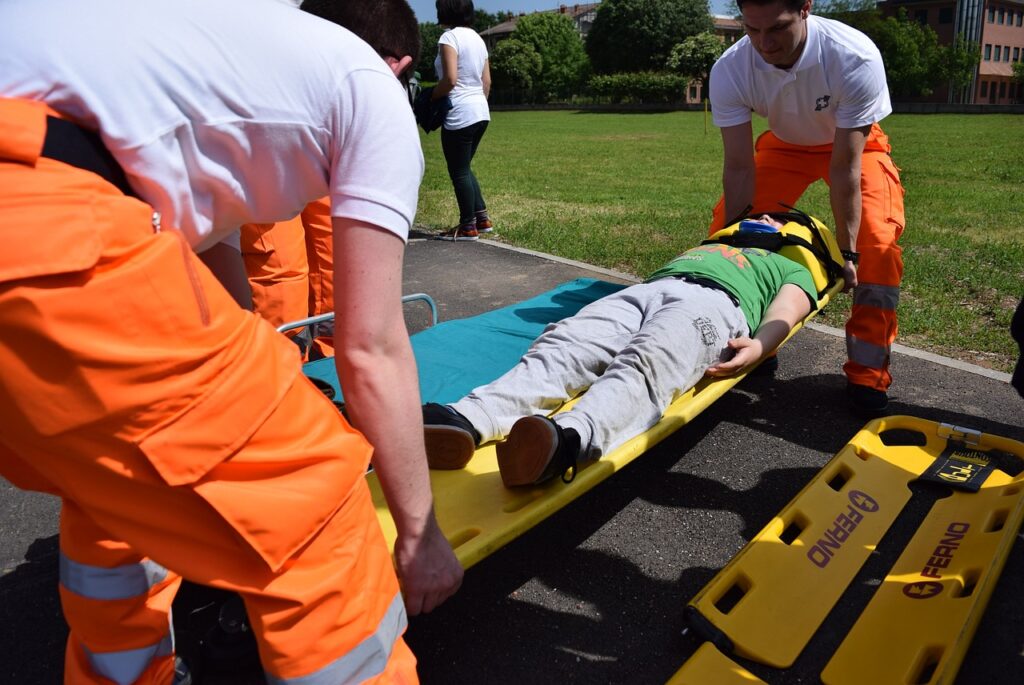
Seek medical attention immediately after the accident. The extent of your injuries and the medical records will play a crucial role in determining the severity of your damages. Keep records of:
- Hospital Visits: Document all hospital or doctor visits related to your injuries.
- Medical Bills: Keeping copies of all medical expenses and receipts for treatments, medications, and therapy is critical to your case.
Consult with an Attorney

After a slip-and-fall accident, it’s wise to consult with a reputable slip-and-fall accident attorney experienced in California law. They can assess the details of your case and help you understand the complexity of the legal process, your legal rights, and your options. An attorney can also guide you through gathering evidence, negotiating with insurance companies, and, if necessary, pursuing legal action in court.
Steps to Take When You Encounter a Slip and Fall Accident
Accidents can happen anytime, and slip and fall incidents are no exception. Suppose you find yourself in such a situation. In that case, it’s crucial to take the right steps to protect yourself and potentially seek legal action if necessary.
Step 1: Ensure Your Safety
The first priority is your safety. Assess your immediate condition and try to move to a safe location if possible. If you’re seriously injured, remain still and wait for medical assistance.
Step 2: Seek Medical Attention
Don’t ignore minor injuries. Seek medical attention promptly, regardless of the extent of your injuries. Some injuries, like internal or head injuries, may not manifest symptoms immediately, but can be severe. Document all medical treatments and keep copies of bills and records.
Step 3: Document the Scene
Gather evidence at the accident scene, as this will be a significant factor in determining if you should pursue legal action:
- Photographs: Take pictures of the hazard that caused your fall, the surrounding area, and any visible injuries. These photos will serve as valuable evidence.
- Witness Information: If there were any witnesses to the accident, obtain their contact information. Witness accounts, primarily if supported by documentation and recorded media, can help corroborate your interpretation of the incident.
Step 4: Report the Incident
Report the accident to the supervisor, manager, or property owner. Ensure an incident report is filed, and request a copy for your records. This report can be essential when determining liability.
Step 5: Preserve Evidence
Preserve any physical evidence related to your accident, such as the clothing and shoes you were wearing at the time. Do not repair or discard them, as they may be crucial evidence.
Step 6: Contact an Attorney
Consider consulting with a slip-and-fall accident lawyer, especially if you believe the accident occurred due to negligence or unsafe conditions on the property. An attorney widely experienced in slip-and-fall cases can provide guidance on your rights and options. Your lawyer will also help you navigate the complicated California legal process and work towards obtaining compensation for your injuries and losses.
Conclusion: Don’t Ignore Your Slip and Fall Case
Slip and fall incidents require immediate attention. They can lead to severe injuries and substantial financial strain. Suppose you suspect that the negligence of a property owner or occupier caused your accident. In that case, it’s vital to recognize the indicators that make your case eligible for legal action in California. Prioritize seeking prompt medical care, collecting evidence, and seeking legal counsel to assert your rights and secure compensation for your injuries and losses. Always prioritize your safety and well-being, and understanding when to pursue legal action is a crucial step toward attaining justice.
Remember, when you encounter a slip-and-fall accident, taking the right steps and seeking legal counsel promptly can ensure justice and compensation for your injuries and losses.
JSM Injury Firm APC – Your Slip and Fall Accident Lawyer
When you’re facing the aftermath of a slip and fall accident and need expert legal assistance, JSM Injury Firm APC is here to help.
Our experienced lawyer is widely experienced in California personal injury law and has a track record of success in representing clients in similar cases. The slip-and-fall accident attorney on their team comprehends the intricacies of such cases and will tirelessly strive to safeguard your legal rights.
- Expertise: Our slip and fall attorney deeply understands California’s premises liability laws and knows how to build strong cases for our clients.
- Personalized Service: We treat each case with the individual attention it deserves, tailoring our approach to your circumstances.
- Proven Results: Our firm has a history of securing favorable settlements and verdicts for slip and fall accident victims.
Contact Us Today
Don’t let a slip-and-fall accident disrupt your life without seeking the compensation you may be entitled to. Contact JSM Injury Firm APC today to discuss your case with our dedicated slip and fall accident lawyers.
Call us at (949) 404-4826 or visit our website at https://jsminjuryfirm.com/ to schedule a free consultation. Let us fight for your rights and help you on the path to recovery.
The post Signs That Your Slip and Fall Accident Qualifies for Legal Action in California appeared first on JSM Injury Firm APC.
Beyond the Pain: California Serious Injury Cases and the Path to Recovery 8 Sep 2023, 12:28 pm
In life, unexpected accidents can happen in the blink of an eye, leaving individuals with serious injuries that disrupt their physical, emotional, and financial well-being. When facing such circumstances in California, understanding the legal aspects of serious injury cases and the journey to recovery becomes essential. This blog post delves into navigating serious injury cases in California and highlights the path to recovery beyond the pain.
The Reality of Serious Injuries:

Serious injuries can stem from various incidents, including car accidents, slips and falls, workplace mishaps, and more. These injuries often result in extensive medical treatments, rehabilitation, lost wages, and profound emotional distress. In California, individuals injured due to someone else’s negligence have the right to seek compensation for their damages through personal injury claims.
What Qualifies as Serious Injury Cases in California?

In California, serious injury cases encompass a range of injuries that substantially impact an individual’s life, well-being, and ability to function. While each case is unique, there are several types of injuries that commonly qualify as serious injury cases in California:
- Traumatic Brain Injuries (TBI): Powerful impacts or forceful strikes to the head can result in traumatic brain injuries (TBIs). These injuries can potentially cause cognitive, emotional, and physical impairments. The spectrum of Traumatic Brain Injuries encompass incidents ranging from concussions to more severe cases necessitating extensive and ongoing medical treatment and rehabilitation efforts.
- Spinal Cord Injuries: These can lead to paralysis or the loss of motor function. Spinal cord injuries frequently result in substantial disabilities, demanding extensive medical interventions and utilizing adaptive devices to facilitate mobility.
- Amputations: The absence of a limb, whether due to accidents or medical procedures, can create deep-seated physical and psychological impacts. This circumstance calls for rehabilitation, the utilization of prosthetics, and the need for enduring adaptations to one’s daily life.
- Severe Fractures: Fractures that require surgical intervention, multiple surgeries, or prolonged immobilization can significantly impact an individual’s mobility, quality of life, and ability to work.
- Burn Injuries: Severe burns can result in permanent scarring, physical disfigurement and require extensive medical treatments, including surgeries and skin grafts.
- Organ Damage: Injuries that damage vital organs can lead to ongoing medical complications, surgeries, and long-term health issues.
- Internal Injuries: Harm inflicted upon internal organs, such as the lungs, liver, or kidneys, can result in enduring health complications and necessitate invasive medical interventions.
- Multiple Bone Fractures: Suffering multiple fractures in different body parts can lead to extended periods of immobility, pain, and the need for rehabilitative therapies.
- Severe Soft Tissue Injuries: Deep cuts, tears, or damage to muscles, tendons, and ligaments can result in chronic pain, limited mobility, and the need for ongoing medical care.
- Vision or Hearing Loss: Injuries that lead to significant vision or hearing loss can impact an individual’s ability to perform daily tasks, communicate, and engage with the world.
The Legal Process:

When pursuing a serious injury case in California, several key steps come into play:
- Seek Medical Attention: Prioritize your health by seeking immediate medical care. Your well-being is paramount, and proper documentation of your injuries is crucial for your case.
- Consultation with an Attorney: Securing the assistance of a seasoned personal injury attorney is crucial. They possess the ability to evaluate the particulars of your situation, accumulate evidence, and steer you through the intricacies of the legal process.
- Investigation: Your legal representative will undertake a comprehensive inquiry to ascertain responsibility and amass evidence supporting your claim. This endeavor involves procuring witness statements, obtaining accident reports, and scrutinizing medical records.
- Negotiation: Your lawyer will negotiate with insurance companies and other pertinent parties to achieve an equitable settlement encompassing your medical expenses, lost wages, pain and suffering, and additional damages.
- Litigation (if necessary): If the pursuit of a fair settlement proves unsuccessful, your attorney might initiate legal action by filing a lawsuit and entering the realm of litigation. This course of action entails the presentation of your case before a judge and jury and advocating for your rights within the courtroom setting.
The Path to Recovery:
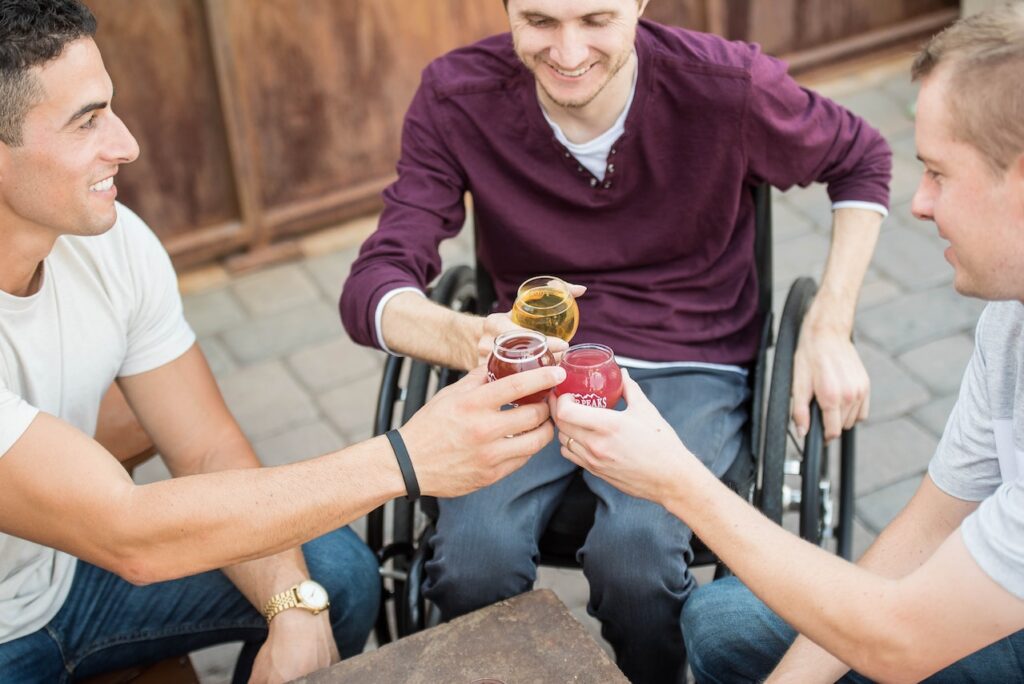
Recovery from serious injuries extends beyond physical healing. It encompasses emotional well-being, financial stability, and regaining control of your life:
- Medical Treatment and Rehabilitation: Following your healthcare provider’s recommendations and engaging in rehabilitation therapies can aid in your physical recovery and improve your overall quality of life.
- Emotional Support: Dealing with the aftermath of a severe injury can exact an emotional toll. Seeking assistance from loved ones, therapists, support groups, and friends can aid in maneuvering through the emotional hurdles that arise.
- Financial Stability: Your attorney’s efforts to secure fair compensation play a pivotal role in easing the financial burdens caused by medical bills, lost wages, and other related expenses.
- Adapting and Moving Forward: Embracing adaptive strategies and focusing on what you can achieve in your new circumstances is crucial for moving forward positively.
The Role of JSM Injury Firm: Your Trusted Partner in Serious Injury Cases

When dealing with the complexities of a serious injury case in California, having a qualified legal partner by your side can make all the difference. JSM Injury Firm, a respected legal entity with extensive experience in personal injury cases, stands ready to support you through every step of your recovery journey. At the heart of their expertise lies a dedicated Anaheim personal injury lawyer with an in-depth understanding of California’s legal landscape.
With JSM Injury Firm’s Anaheim personal injury lawyer, you gain access to an advocate who is not only well-versed in the intricacies of personal injury law but also deeply committed to your well-being. Their profound knowledge of California’s legal framework empowers them to navigate the complexities of your case with precision, ensuring that no stone is left unturned in your pursuit of justice and compensation. Beyond their legal proficiency, they bring empathy and understanding to the table, recognizing the emotional toll that serious injuries can exact on individuals and their families.
JSM Injury Firm’s Anaheim personal injury lawyer is skilled in building strong cases backed by compelling evidence. They will work diligently to investigate your accident’s circumstances, gather witness statements, analyze medical records, and collaborate with experts as needed. Through strategic negotiation and, if necessary, dedicated litigation, they will advocate tirelessly for your rights, aiming to secure the compensation you deserve to facilitate your recovery and future well-being.
At a time when your focus should be on healing and rebuilding, the support of JSM Injury Firm’s Anaheim personal injury lawyer becomes invaluable. They take the burden of legal complexities off your shoulders, allowing you to channel your energy toward healing and adapting to your new circumstances. With JSM Injury Firm as your legal ally, you can be assured that you have a qualified partner who is dedicated to pursuing justice on your behalf and guiding you toward a brighter future after a serious injury.
Let JSM Injury Firm Provide Legal Support For Your Serious Injury Case to Help Facilitate the Recovery Process
In the aftermath of a serious injury in California, the road to recovery requires a multi-faceted approach encompassing medical care, emotional support, and legal guidance. Navigating the legal process with the assistance of a knowledgeable attorney can help you secure the compensation you need to rebuild your life after an unfortunate accident. Remember, your path to recovery extends beyond the pain. With the right support, you can emerge stronger and more resilient. To learn more about serious injuries or to get free legal advice, call (949) 404-4826 or fill out the form on our contact page.
The post Beyond the Pain: California Serious Injury Cases and the Path to Recovery appeared first on JSM Injury Firm APC.
From Catastrophic Injuries to Personal Injury Claims: How an Anaheim Personal Injury Lawyer Can Help You 31 Aug 2023, 10:13 am
Unforeseen accidents can lead to catastrophic injuries, inflicting profound physical, emotional, and financial ramifications upon those affected. The aftermath of such incidents can be incredibly daunting, whether stemming from a car collision, a slip and fall mishap, medical negligence, or any other form of negligent act. It is during these trying moments that enlisting the aid of a proficient Anaheim personal injury lawyer can prove pivotal. Their expertise can guide you through the intricate legal intricacies, ensuring you receive the rightful compensation you are entitled to.
Understanding Catastrophic Injuries
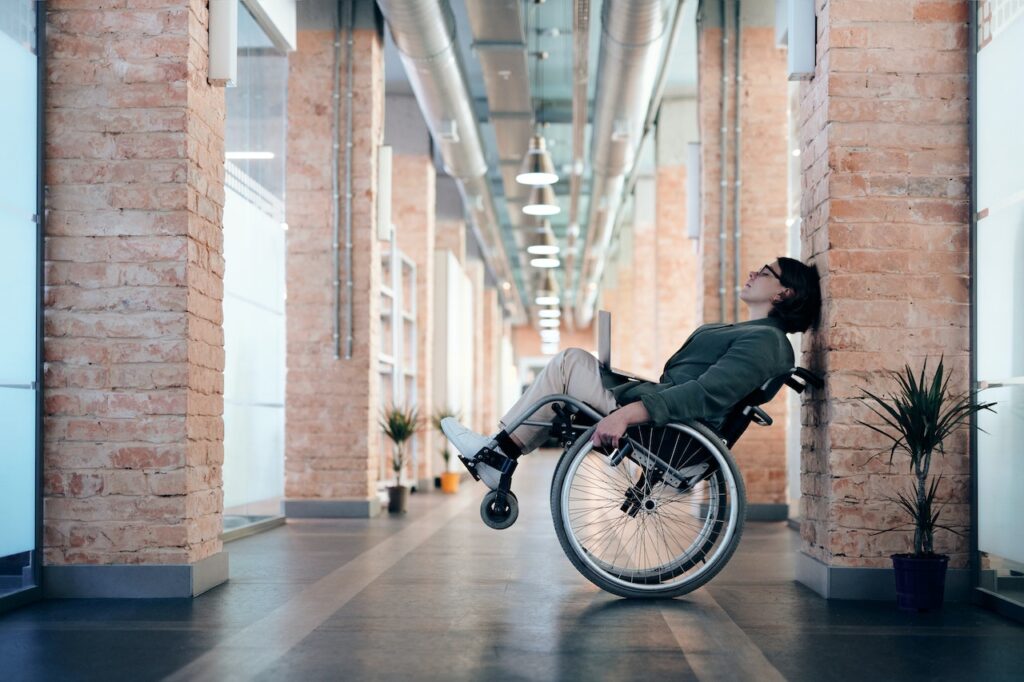
Catastrophic injuries encompass severe and often life-altering damage, resulting in significant disruption to an individual’s life. These injuries frequently result in lasting disabilities, necessitating comprehensive medical treatment, rehabilitation, and adaptive aids for everyday activities, such as long-term use of a wheelchair. Examples of catastrophic injuries encompass spinal cord injury leading to paralysis, traumatic brain injuries, severe burn wounds, amputations, and complex fractures. The combined effect of such injuries can be exceedingly substantial, impacting physical, emotional, and financial aspects of a person’s life.
Role of an Anaheim Personal Injury Lawyer

A personal injury attorney is dedicated to advocating for the rights of individuals who have experienced injuries due to wrongful actions or the negligence of others. Yet, their role goes beyond just legal representation; they offer priceless guidance and unwavering support during these trying times.
- Legal Expertise:
Navigating personal injury laws can be intricate, especially given their variation across jurisdictions. A seasoned Anaheim personal injury attorney comprehends these legal nuances and adeptly maneuvers the legal framework on your behalf. They will meticulously evaluate your case’s strengths, amass compelling evidence, and construct a robust legal strategy to optimize your prospects of obtaining equitable compensation.
- Investigation:
Gathering evidence is crucial to proving negligence in a personal injury case. A lawyer will conduct a thorough investigation, which may involve collecting accident reports, interviewing witnesses, reviewing medical records, and consulting experts to reconstruct the incident and establish liability.
- Calculating Damages:
Catastrophic injuries frequently give rise to substantial medical expenses, diminished earnings, enduring physical distress, and the ongoing financial commitment to long-term care. A seasoned attorney can precisely quantify both tangible financial losses and intangible emotional tolls, guaranteeing that you receive compensation for immediate and future outlays.
- Negotiation:
Many personal injury cases are settled through negotiations with insurance companies. Lawyers skilled in negotiation can advocate for your rights and negotiate with insurance adjusters to achieve a settlement that reflects the actual value of your case. This is crucial to prevent insurers from offering inadequate compensation.
- Litigation:
Should a fair settlement remain elusive, your legal counsel will expertly navigate you through the litigation journey. They will meticulously ready and present your case within the courtroom, acting as a steadfast representative of your rights and resolutely advocating for the rightful compensation owed to you.
- Peace of Mind:
Coping with a catastrophic injury takes a significant emotional toll. Enlisting the support of a well-informed attorney can relieve the burden by managing the legal intricacies, thereby granting you the space to concentrate on your healing and overall well-being.
Responding to Catastrophic Injuries in California

Encountering a catastrophic injury in California can be an overwhelming experience that demands quick and informed action. In such distressing situations, understanding the steps to take can greatly impact the outcome of your personal injury claim. Here’s a comprehensive guide on what to do if you or a loved one faces catastrophic injuries in California:
- Seek Immediate Medical Attention
The foremost concern in any situation involving a catastrophic injury is promptly seeking medical assistance. Even if injuries seem minor, it is crucial to undergo a comprehensive medical assessment. This not only safeguards your health but also establishes an authoritative record of the injuries – a pivotal factor for your subsequent personal injury claim.
- Document the Scene
Gather as much information as possible from the scene of the incident. Take photos of the accident site, injuries sustained, property damage, and any contributing factors. This visual evidence can provide crucial support for your case.
- Preserve Evidence
Preserve any evidence related to the incident. This includes retaining medical records, bills, police reports, eyewitness contact information, and any correspondence with insurance companies. The more comprehensive your documentation, the stronger your case becomes.
- Consult an Anaheim Personal Injury Lawyer
Once you’ve received the necessary medical care, consult an experienced Anaheim personal injury lawyer as soon as possible. Their legal expertise will guide you through the next steps, ensuring you understand your rights, potential compensation, and the legal process ahead.
- Notify Relevant Parties
Suppose the injury resulted from the negligence of another party, like a car accident caused by another driver. In that case, it’s essential to notify the liable parties and their insurance providers about the incident. However, exercise caution when sharing information and refrain from accepting fault, as these statements might be employed against you in the future.
- Avoid Settling Prematurely
Insurance companies might approach you with early settlement offers. It’s essential to remember that these initial offers may not accurately reflect the full extent of your injuries and associated costs. Consulting with your lawyer before accepting any settlement is advised.
- File a Personal Injury Claim
Your attorney will guide you through the process of initiating a personal injury claim against the negligent party. This entails composing a detailed demand letter that delineates your injuries, incurred expenses, and the request for compensation. Subsequently, your legal representative will engage in negotiations with the liable party’s insurance provider to arrive at an equitable settlement.
- Litigation if Necessary
If a fair settlement cannot be reached through negotiations, your lawyer will guide you through the process of filing a lawsuit. This could involve presenting your case in court, where your lawyer will advocate for your rights and fight for the compensation you deserve.
- Focus on Recovery
While the legal process unfolds, focus on your recovery and well-being. Follow your doctor’s recommendations, attend necessary rehabilitation, and prioritize your health.
- Trust JSM Injury Firm – Your Expert Anaheim Personal Injury Lawyer
Your attorney will guide you through the process of initiating a personal injury claim against the negligent party. This entails composing a detailed demand letter that delineates your injuries, incurred expenses, and the request for compensation. Subsequently, your legal representative will engage in negotiations with the liable party’s insurance provider to arrive at an equitable settlement.
Let JSM Injury Firm Provide You With an Anaheim Personal Injury Lawyer to Support You in Your Catastrophic Injury Case

Encountering catastrophic injuries is a challenging and life-altering experience that can leave you feeling overwhelmed and uncertain about the future. Navigating the aftermath requires a combination of prompt action, proper documentation, and expert legal assistance. In these difficult times, having a dedicated and experienced personal injury lawyer by your side becomes invaluable. This is where JSM Injury Firm truly shines. With their team of compassionate and knowledgeable attorneys, they not only understand the complexities of catastrophic injury cases but also empathize with the physical, emotional, and financial toll they can take. JSM Injury Firm is devoted to delivering steadfast support, comprehensive legal representation, and a demonstrated history of success in assisting clients to rightfully secure the compensation they deserve. By entrusting your case to JSM Injury Firm, you can navigate the challenges of catastrophic injuries with confidence and determination, knowing that you have a powerful ally working tirelessly to advocate for your rights and help you rebuild your life.
Whether you’re dealing with the aftermath of a car accident, medical malpractice, or any other catastrophic incident, JSM Injury Firm stands ready to provide the expertise and support you need to seek justice and secure a brighter future. If someone close to you is involved in an accident that resulted in catastrophic injuries, call us at (949) 404-4826 or fill out the form on our contact page for free legal advice.
The post From Catastrophic Injuries to Personal Injury Claims: How an Anaheim Personal Injury Lawyer Can Help You appeared first on JSM Injury Firm APC.
Common Premises Liability Accidents in Anaheim: From Dog Bites to Faulty Staircases 24 Aug 2023, 9:45 am
Premises liability accidents can occur in various locations, from private homes to commercial establishments, and they encompass a wide range of incidents. In Anaheim, a city known for its vibrant culture and numerous attractions, these accidents can be especially prevalent due to the high volume of tourists and residents frequenting various premises. Among Anaheim’s most common types of premises liability accidents are dog bites and accidents caused by faulty staircases. However, there are other common types of premises liability cases that we’ve handled over the years.
Understanding Premises Liability:

Premises liability is a legal principle that assigns responsibility to property owners and occupants for accidents and injuries transpiring on their premises due to negligence or hazardous conditions. This responsibility extends to maintaining a reasonably safe environment and warning visitors or guests of potential hazards that may not be obvious.
- Dog Bites:
Dog bites and attacks are unfortunate incidents that can result in severe injuries as well as emotional trauma. In Anaheim, where many residents are pet owners, dog-related injuries can occur in public places, parks, or even within private homes. California has specific laws that hold dog owners accountable for injuries caused by their pets, regardless of whether the dog has a history of aggression.
Common scenarios involving dog bites include encounters in public spaces, such as parks or sidewalks, where unleashed dogs approach individuals, leading to potential bites. Property owners who are aware of their dog’s aggressive tendencies and fail to take appropriate precautions could be held liable for resulting injuries.
- Faulty Staircases:
Faulty or poorly maintained staircases pose a significant risk of accidents, particularly in areas with high foot traffic like Anaheim. Whether it’s in commercial buildings, hotels, or residential complexes, staircases that are not properly designed, constructed, or maintained can lead to slips, trips, and falls that result in severe injuries.
Uneven steps, loose handrails, inadequate lighting, and debris on stairs are common hazards that can contribute to accidents. The responsibility falls upon property owners and managers to ensure the proper condition of staircases and the implementation of essential safety measures to avert accidents.
- Slip and Falls:
One of the most prevalent types of premises liability accidents is slip and fall incidents. These accidents often result from hazardous conditions like wet floors, icy sidewalks, or poorly maintained walkways. In Anaheim, where the weather can vary, ensuring proper drainage, promptly addressing spills, and providing slip-resistant surfaces in high-traffic areas can significantly reduce the risk of slip and fall accidents.
- Negligent Security:
Public places, such as hotels, parking lots, and entertainment venues, must prioritize the safety of their visitors by providing adequate security measures. Negligent security can lead to incidents like assaults, robberies, or other criminal activities. Property owners and operators must assess the level of security needed for their premises and implement appropriate measures, such as surveillance cameras, proper lighting, and security personnel.
- Elevator and Escalator Accidents:
Malfunctioning elevators and escalators pose a serious risk to individuals using them. Issues like sudden stops, misaligned steps, or doors closing improperly can lead to injuries ranging from minor to severe. Regular maintenance, inspections, and adherence to safety standards are essential for preventing elevator and escalator accidents.
- Falling Objects:
Objects falling from shelves, construction sites, or poorly secured fixtures can cause significant injuries. Property owners and businesses must ensure that items are properly stored and secured to prevent objects from becoming hazards to visitors and employees.
- Swimming Pool Accidents:
With Anaheim’s warm climate, swimming pools are popular in residential complexes and hotels. However, inadequate fencing, poor maintenance, and lack of supervision can lead to drowning incidents or slip-and-fall accidents around pool areas. Implementing safety measures, providing lifeguards, and adhering to pool regulations are essential to prevent such accidents.
- Fire Hazards:
Faulty wiring, lack of smoke alarms, and improper storage of flammable materials can lead to devastating fires on commercial and residential properties. Property owners must ensure that fire safety measures are in place, including working smoke detectors, fire extinguishers, and clear evacuation plans.
- Hazardous Materials:
Properties that handle hazardous materials, such as chemicals or toxins, must adhere to strict safety protocols to prevent leaks, spills, or exposure to harmful substances. Adequate training, proper storage, and clear labeling are essential to minimize the risk of accidents.
Legal Implications and Responsibilities:

Premises liability laws aim to protect individuals who are legally on a property from harm caused by negligent maintenance or hazardous conditions. Property owners, renters, tenants, and managers have a duty to address potential dangers and rectify them promptly to prevent accidents. Failure to do so could result in legal action seeking compensation for damages, such as to cover medical expenses, lost wages, and account for the resulting emotional distress.
What to Do After a Premises Liability Accident
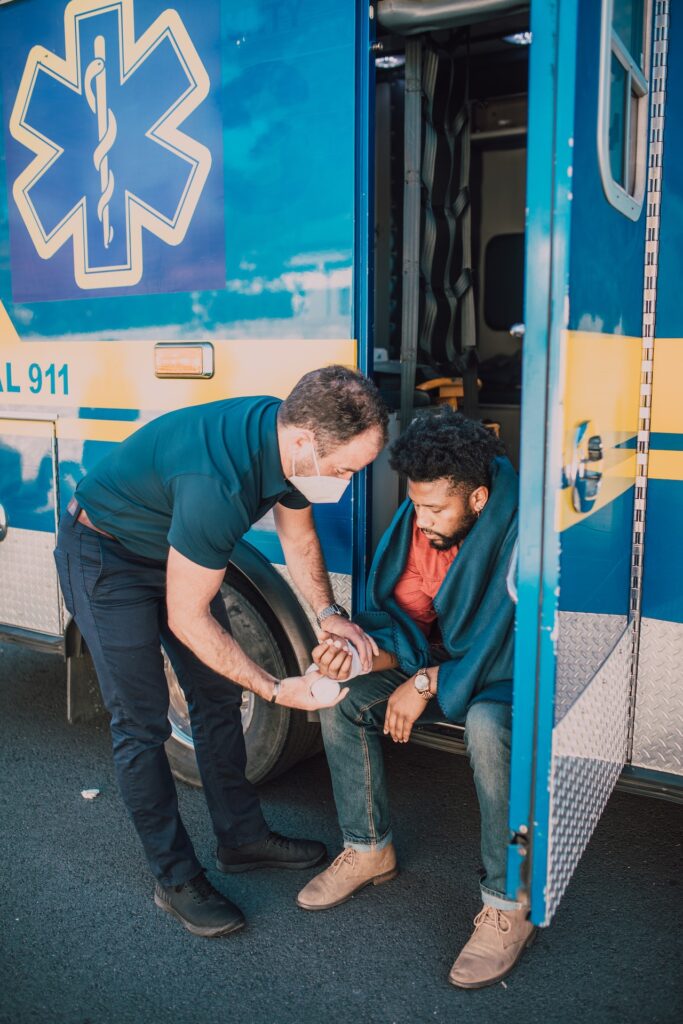
Experiencing a premises liability accident can be a traumatic and overwhelming ordeal. Knowing how to navigate the aftermath is crucial whether you’ve been involved in a slip and fall incident, suffered injuries due to negligent security, or encountered any other form of premises-related harm. In Anaheim, where such accidents can disrupt the enjoyment of this vibrant city, understanding the necessary steps to take is vital.
Immediate Steps to Take:
- Seek Medical Attention: Your well-being and safety take precedence. It’s essential to promptly seek medical attention, regardless of the apparent severity of your injuries. Certain injuries might not exhibit immediate symptoms but could potentially deteriorate over time.
- Report the Incident: If possible, communicate the incident to the property owner, manager, or supervisor. Request a documented account of the event, and if feasible, capture photographs of the surroundings, potential hazards, and any injuries sustained.
- Gather Information: Gather the contact details of any witnesses who were present at the location. Their testimonies could hold significant value if legal proceedings become a necessary course of action.
- Preserve Evidence: Do not discard any clothing or items involved in the incident. Preserve them as potential evidence for your case.
- Document Your Injuries: Maintain a record of your injuries, medical care received, and all costs associated with your recuperation, including medical expenses and any income lost due to inability to work.
- Contact a Premises Liability Attorney: It’s advisable to consult with a premises liability attorney, especially if you believe negligence played a role in the accident.
Why an Anaheim Premises Liability Lawyer from JSM Injury Firm is Important:

Following a premises liability accident, it is vital to seek expert legal guidance to safeguard your rights and secure equitable compensation for your injuries and losses. JSM Injury Firm, a well-regarded and seasoned attorney group specializing in premises liability cases in Anaheim, can provide essential support during this intricate journey.
Expertise: JSM Injury Firm boasts a proficient attorney specializing in premises liability who comprehensively understands the pertinent laws. Their expertise delves deeply into the intricacies of such cases, enabling them to offer personalized and well-informed counsel aligned with your unique circumstances.
Investigation: A crucial aspect of any premises liability case is determining negligence. JSM Injury Firm has the resources to thoroughly investigate the accident, gather evidence, and establish liability, ensuring that you have a strong foundation for your claim.
Negotiation and Litigation: Their Premises Liability Lawyer in Anaheim is an adept negotiator who will work diligently to secure a fair settlement on your behalf. Suppose a fair settlement cannot be reached. In that case, your Anaheim Premises Liability Attorney is prepared to take your case to court.
Maximizing Compensation: Premises liability accidents can lead to various repercussions, including medical costs, wage losses, emotional distress, and additional damages. With a dedication to optimizing your compensation, JSM Injury Firm is committed to aiding your physical and financial recovery, all without requiring upfront payment.
Peace of Mind: Coping with the aftermath of an accident can be emotionally overwhelming. Enlisting the support of a devoted legal team such as JSM Injury Firm can ease the burden, enabling you to concentrate on your recovery as skilled professionals manage the legal intricacies on your behalf.
For Premises Liability Cases in Anaheim, You Can Rely on JSM Injury Firm to Provide Top-Level Legal Support

In summary, comprehending the prompt actions to follow after a premises liability incident and enlisting aid from a reputable entity like JSM Injury Firm can considerably influence your case’s resolution. Through their proficiency, unwavering resolve, and pursuit of fairness, you can effectively navigate the intricate legal terrain, striving for the rightful compensation you merit. Simultaneously, you play a role in fostering a safer environment for fellow residents and visitors in Anaheim’s dynamic urban landscape. If you are involved in a premises liability case, or in any personal injury case in Anaheim or any city in California, call us at (949) 404-4826 or fill out the form on our contact page for free legal advice.
The post Common Premises Liability Accidents in Anaheim: From Dog Bites to Faulty Staircases appeared first on JSM Injury Firm APC.
Page processed in 2.501 seconds.
Powered by SimplePie 1.3.1, Build 20121030175403. Run the SimplePie Compatibility Test. SimplePie is © 2004–2024, Ryan Parman and Geoffrey Sneddon, and licensed under the BSD License.
